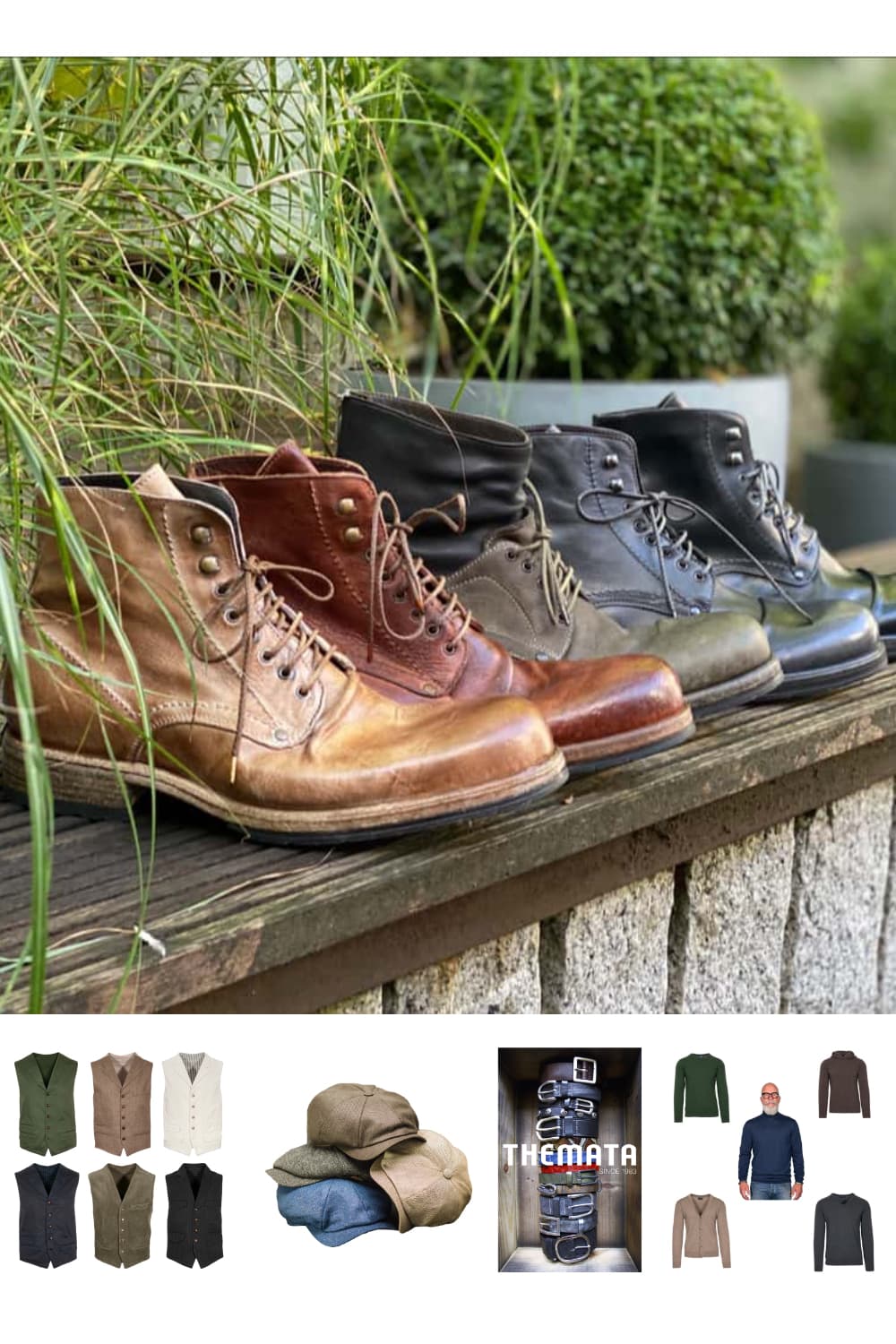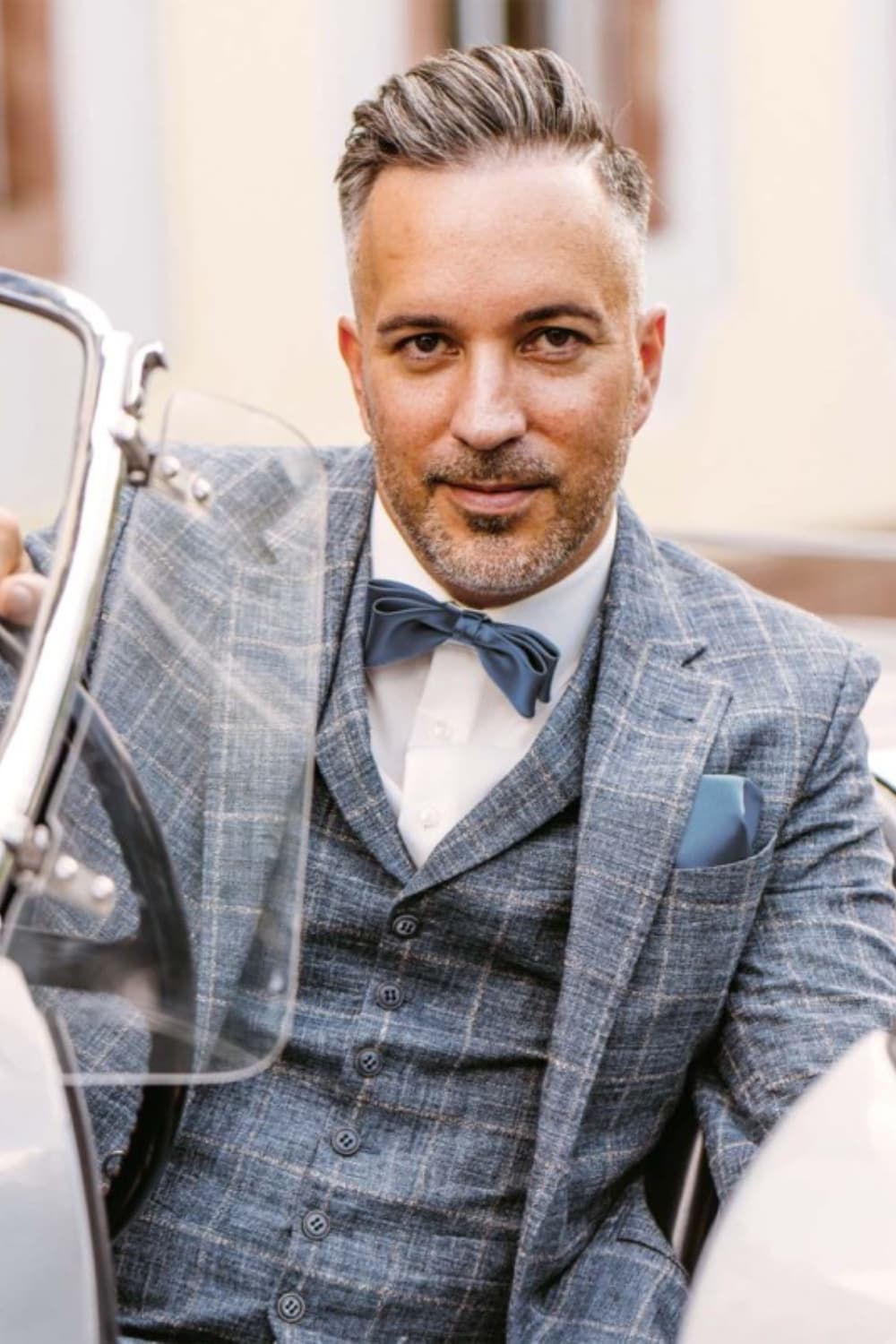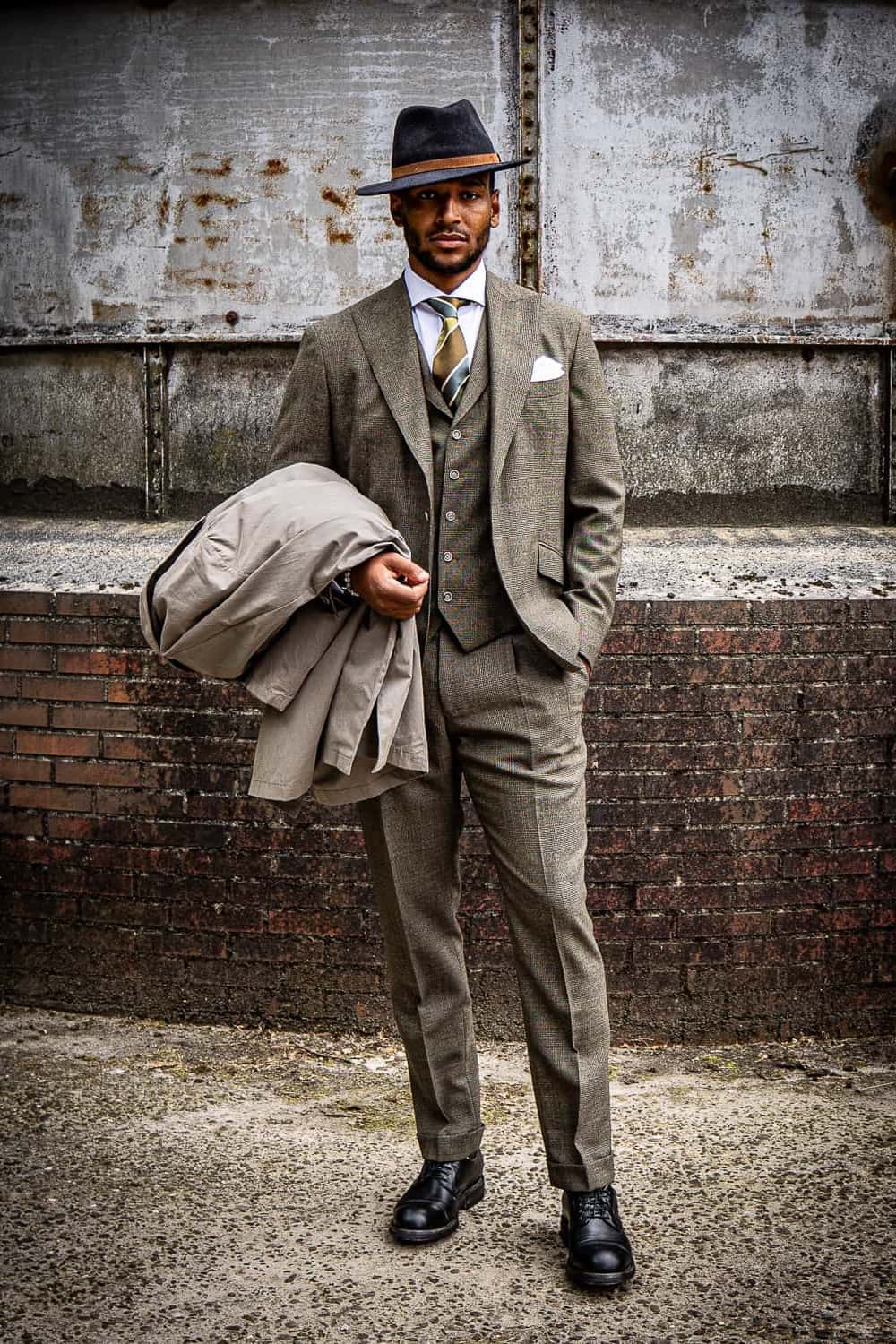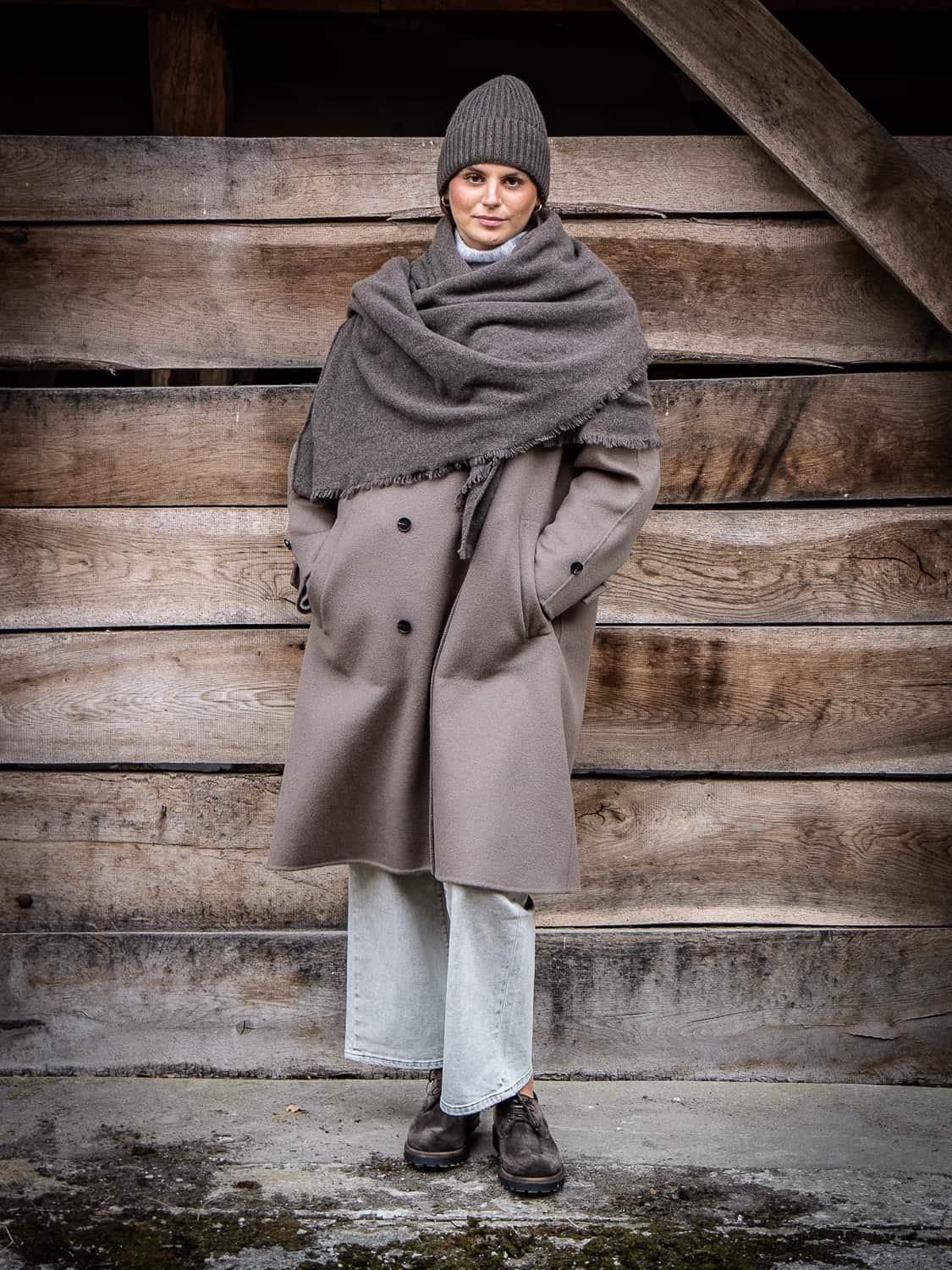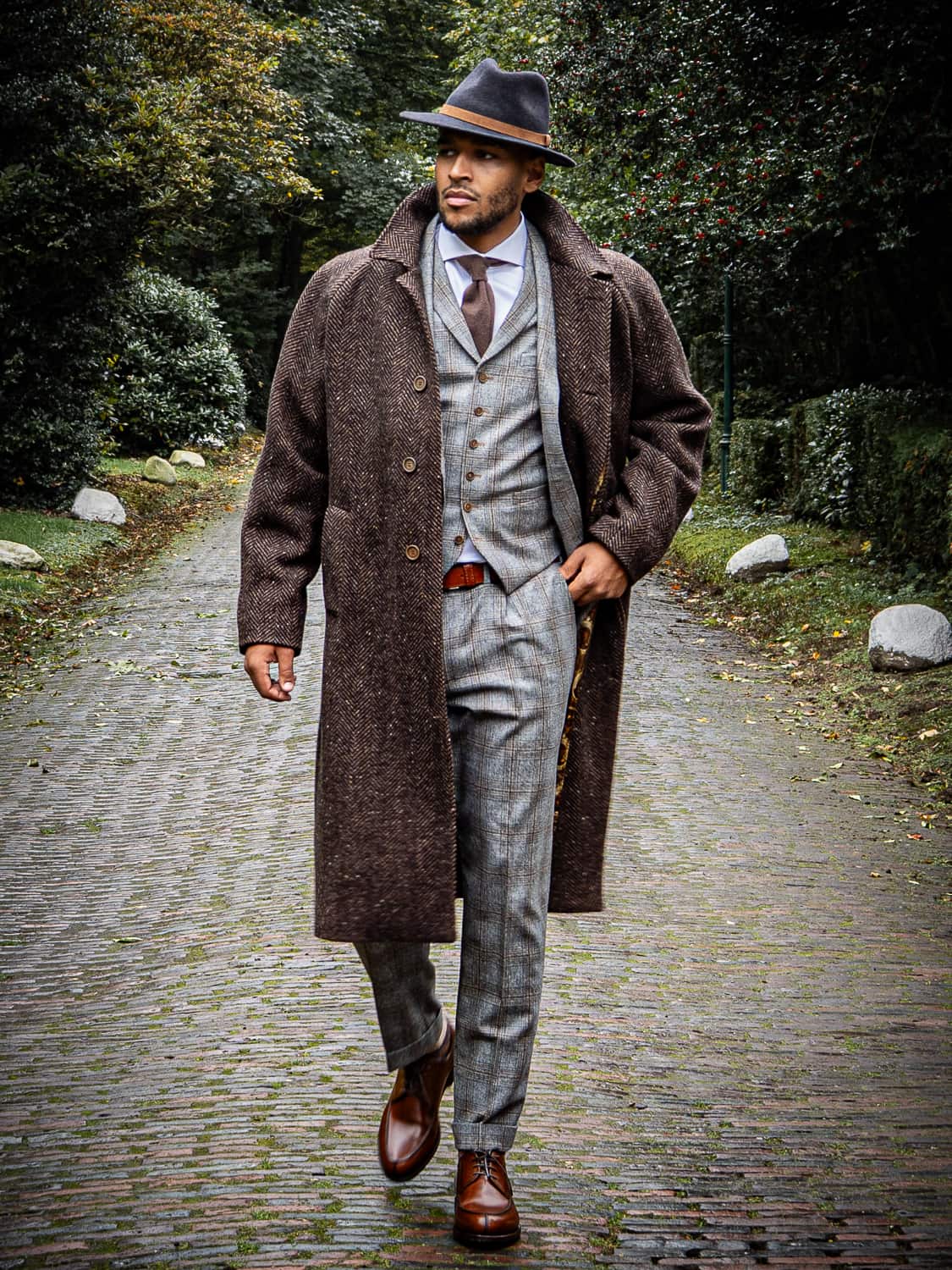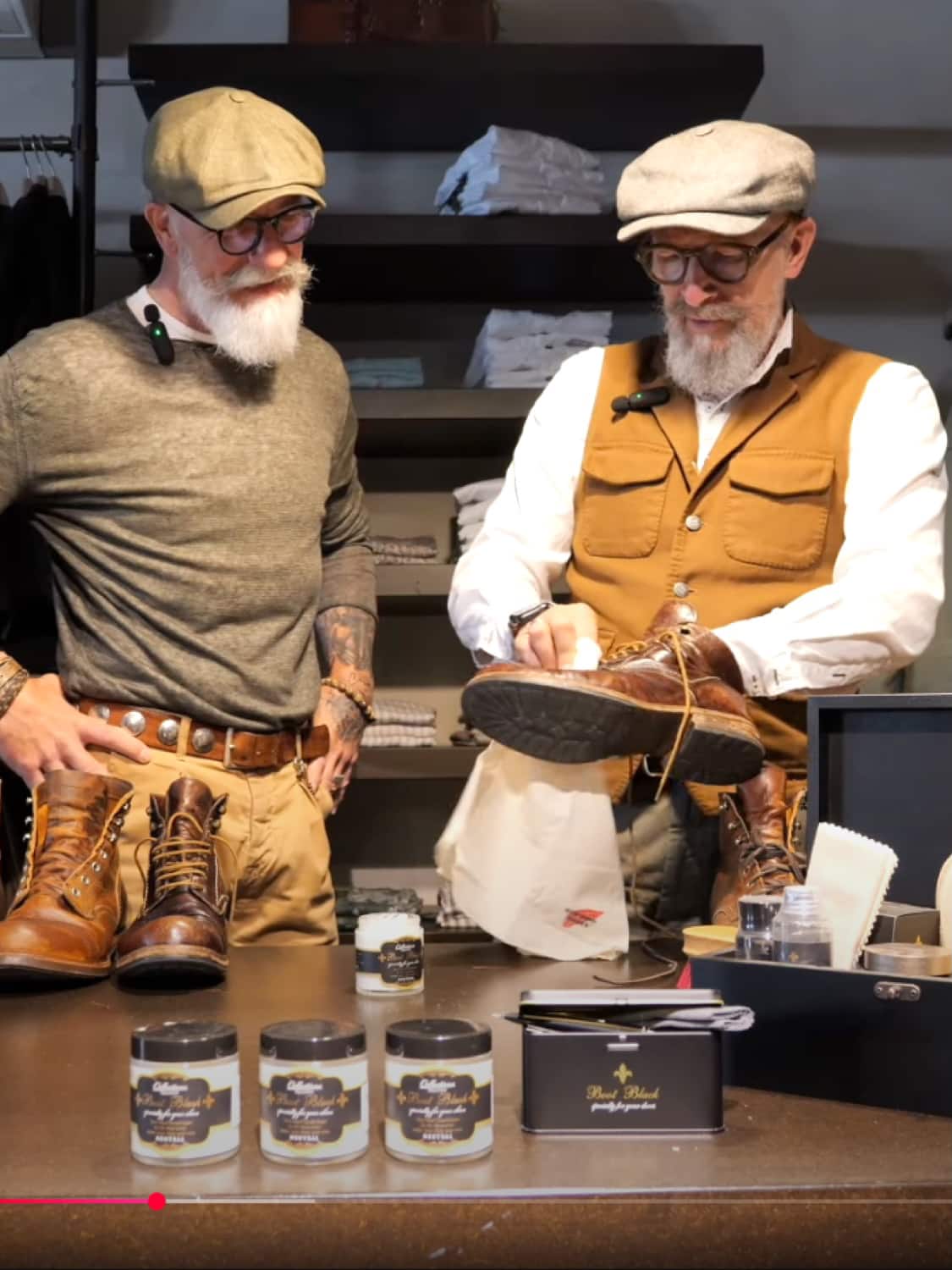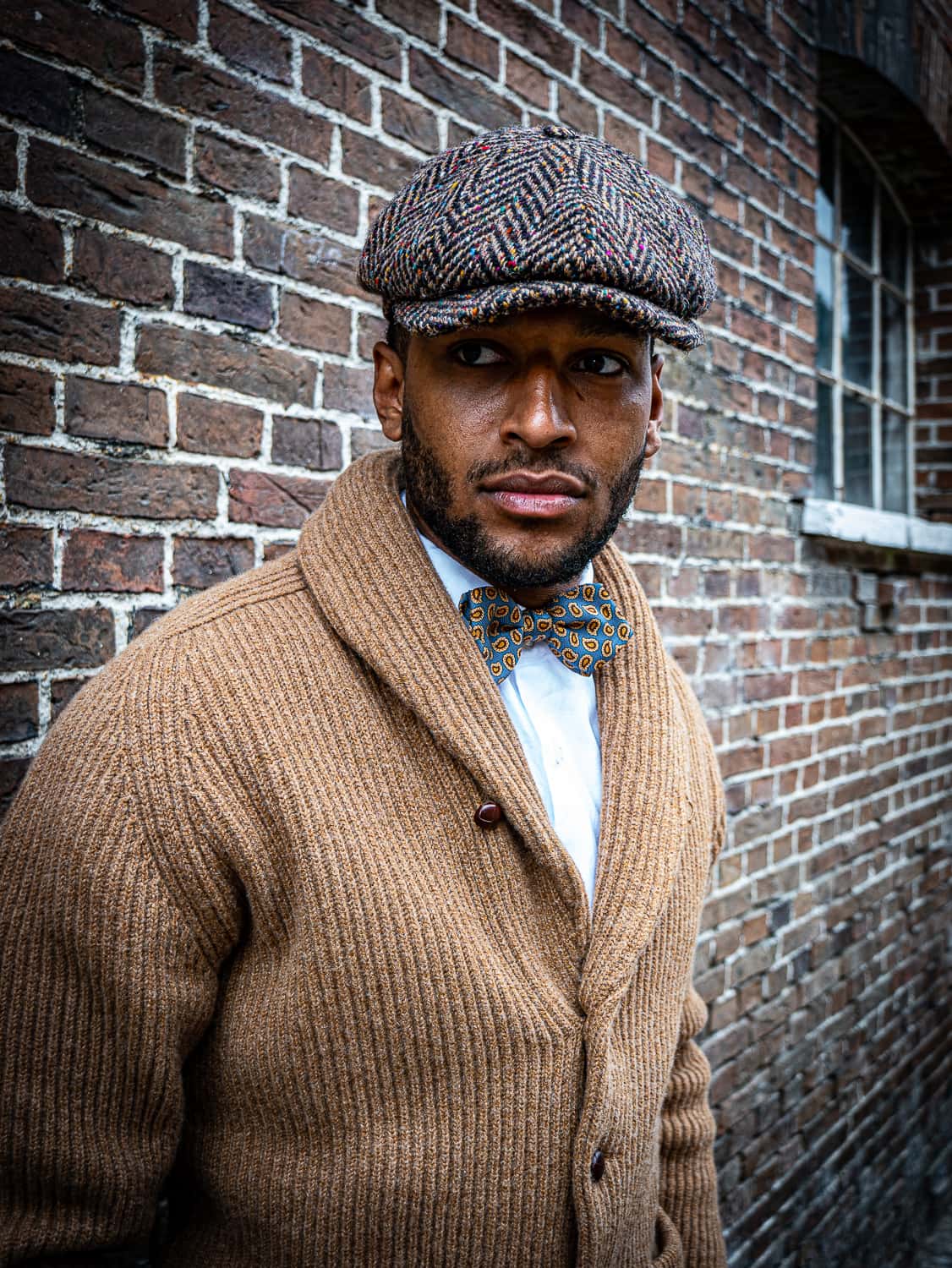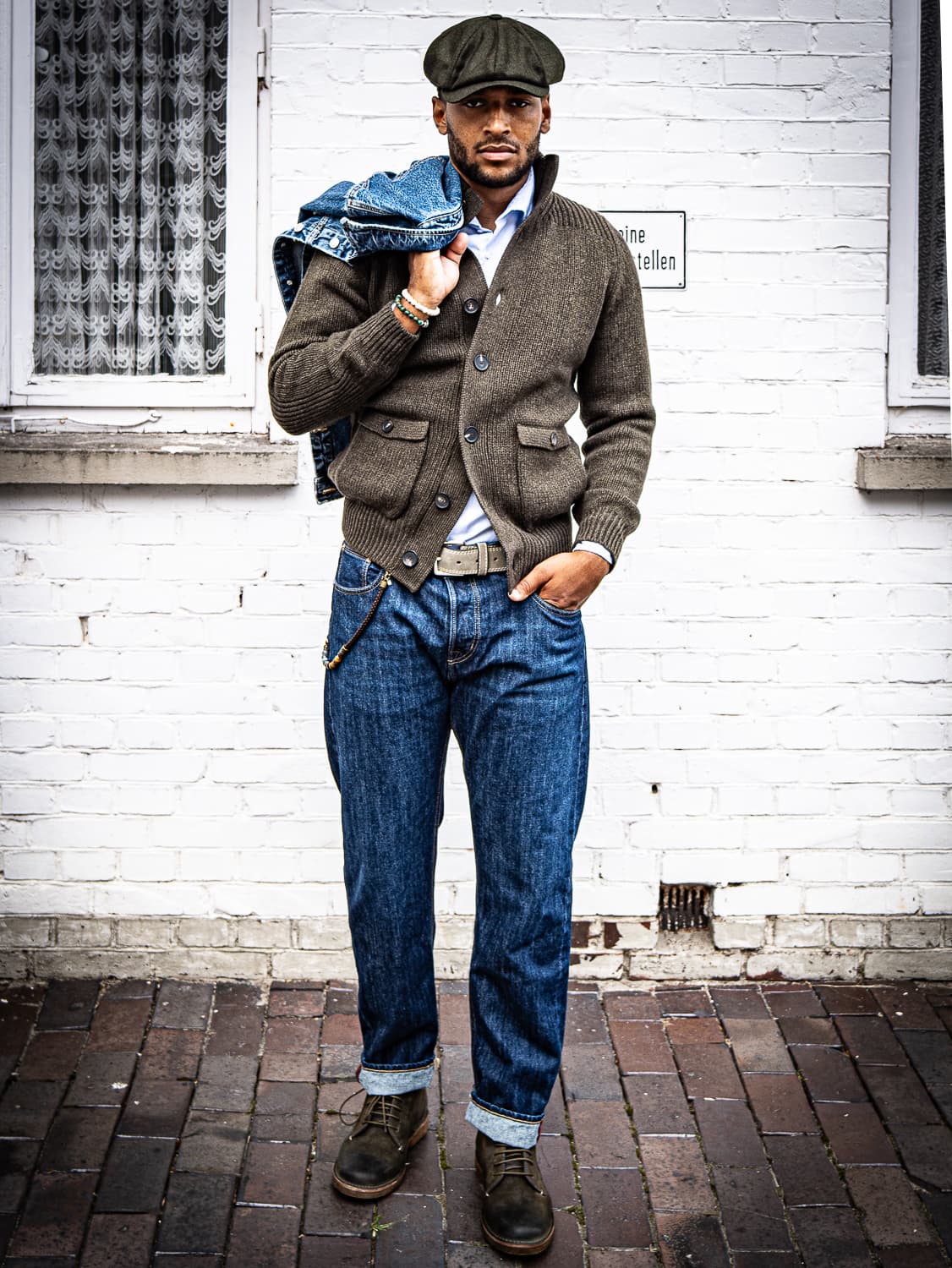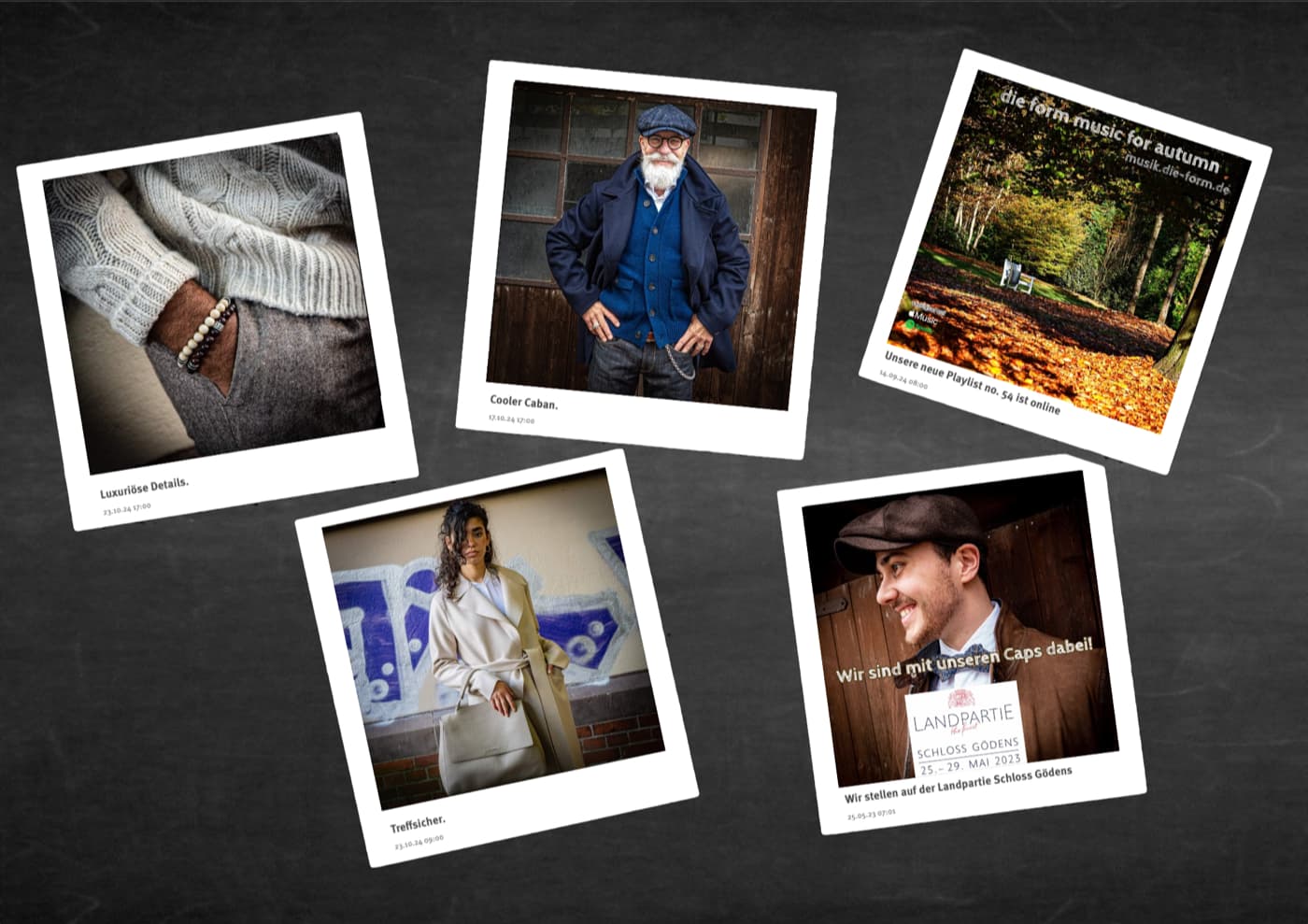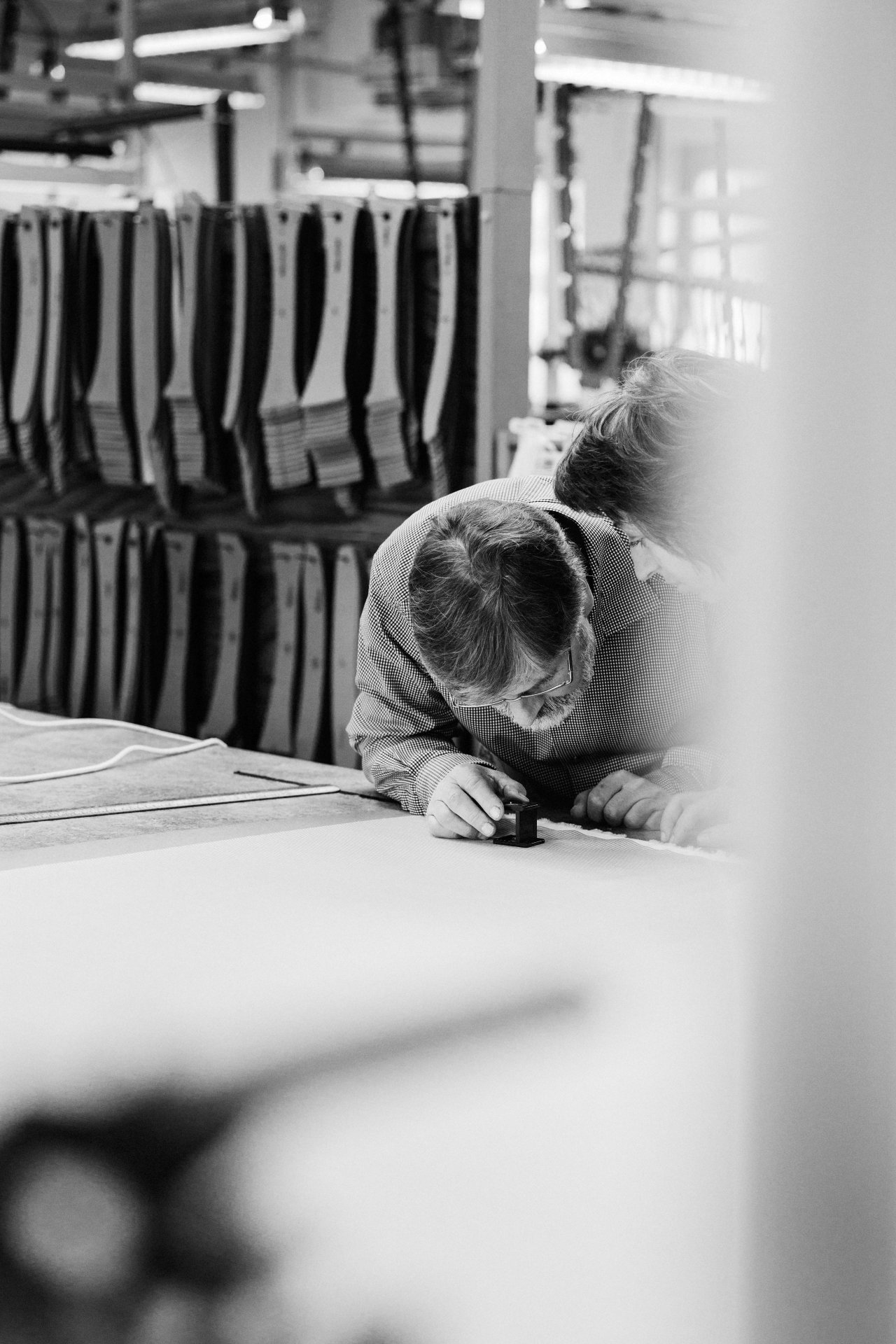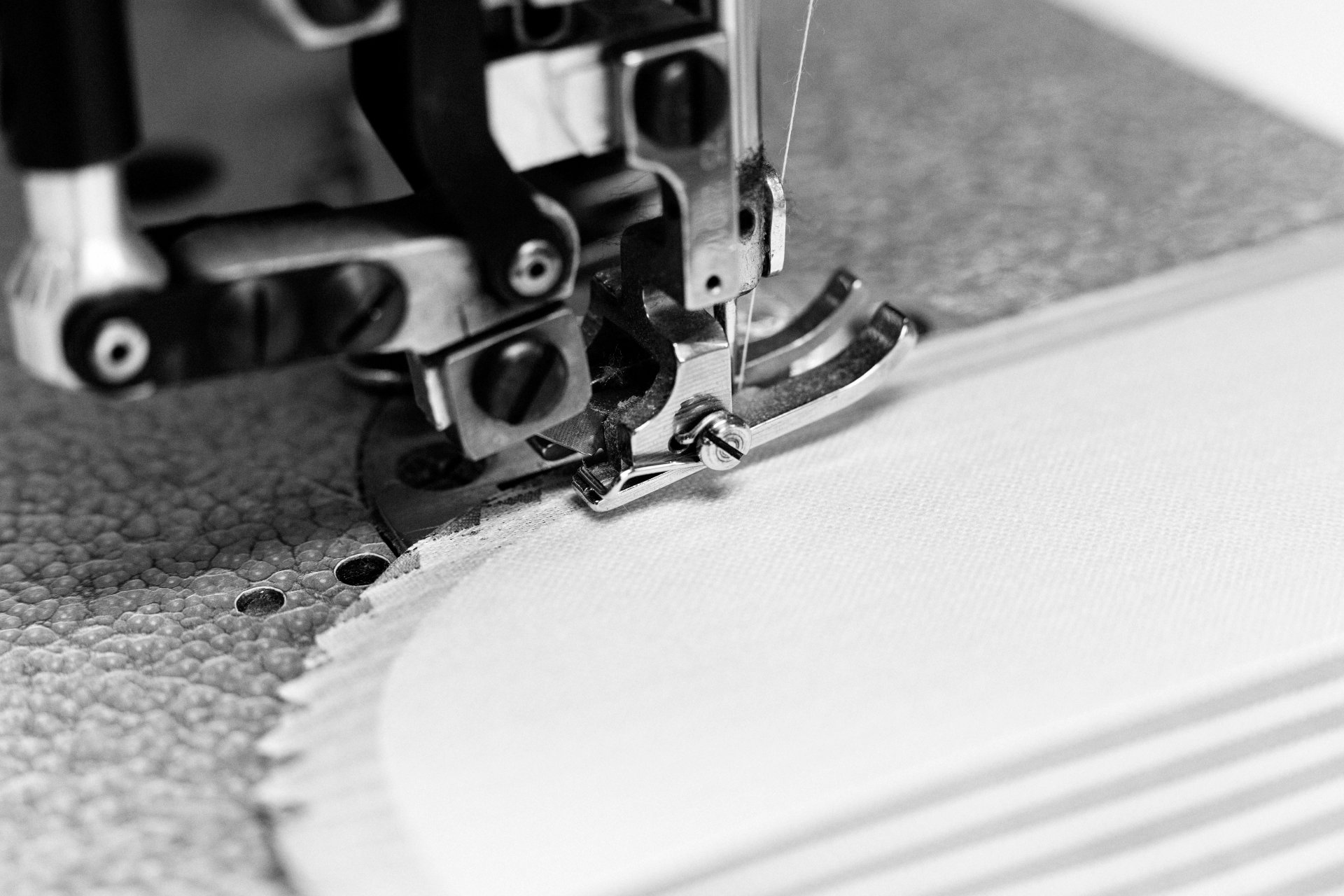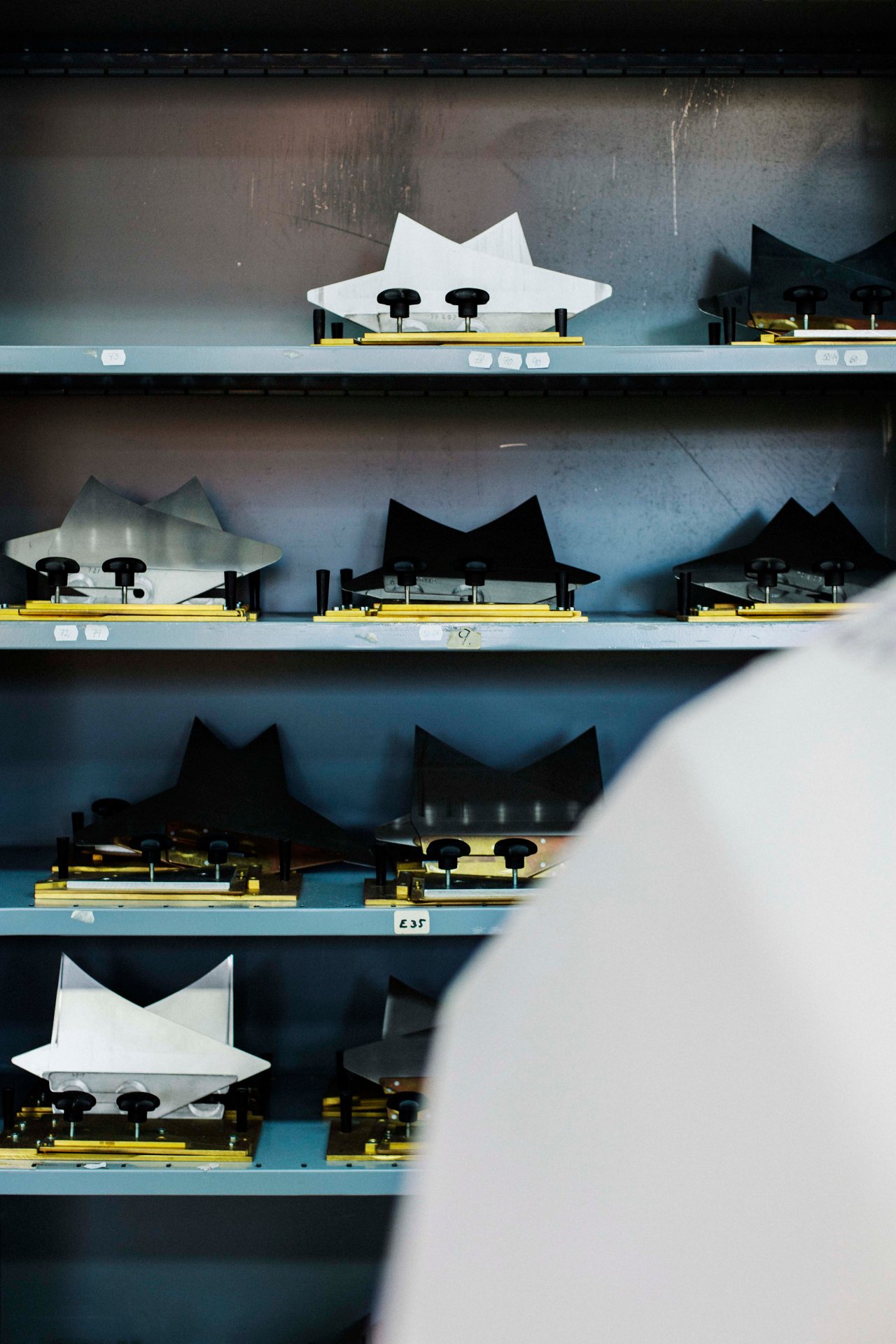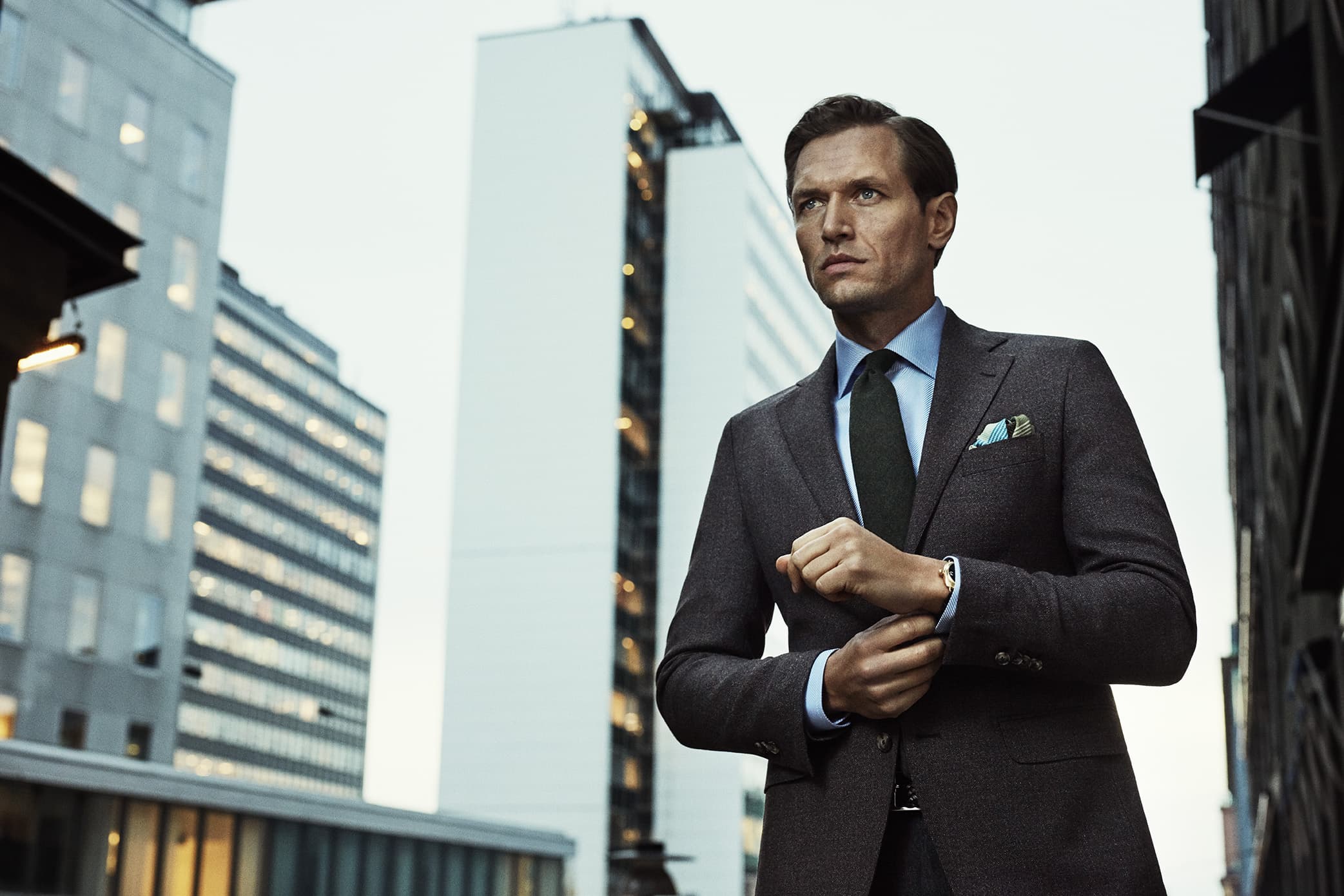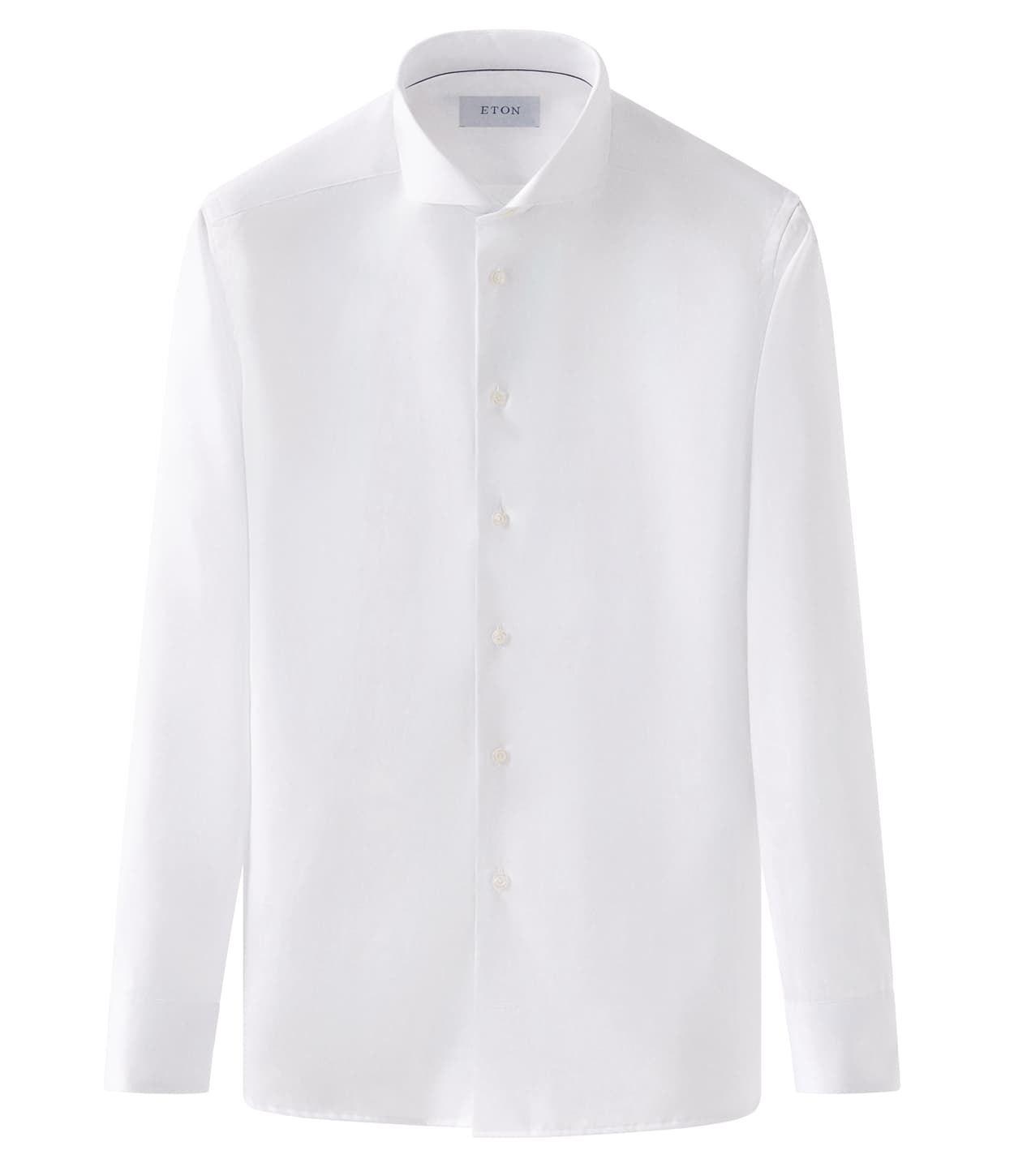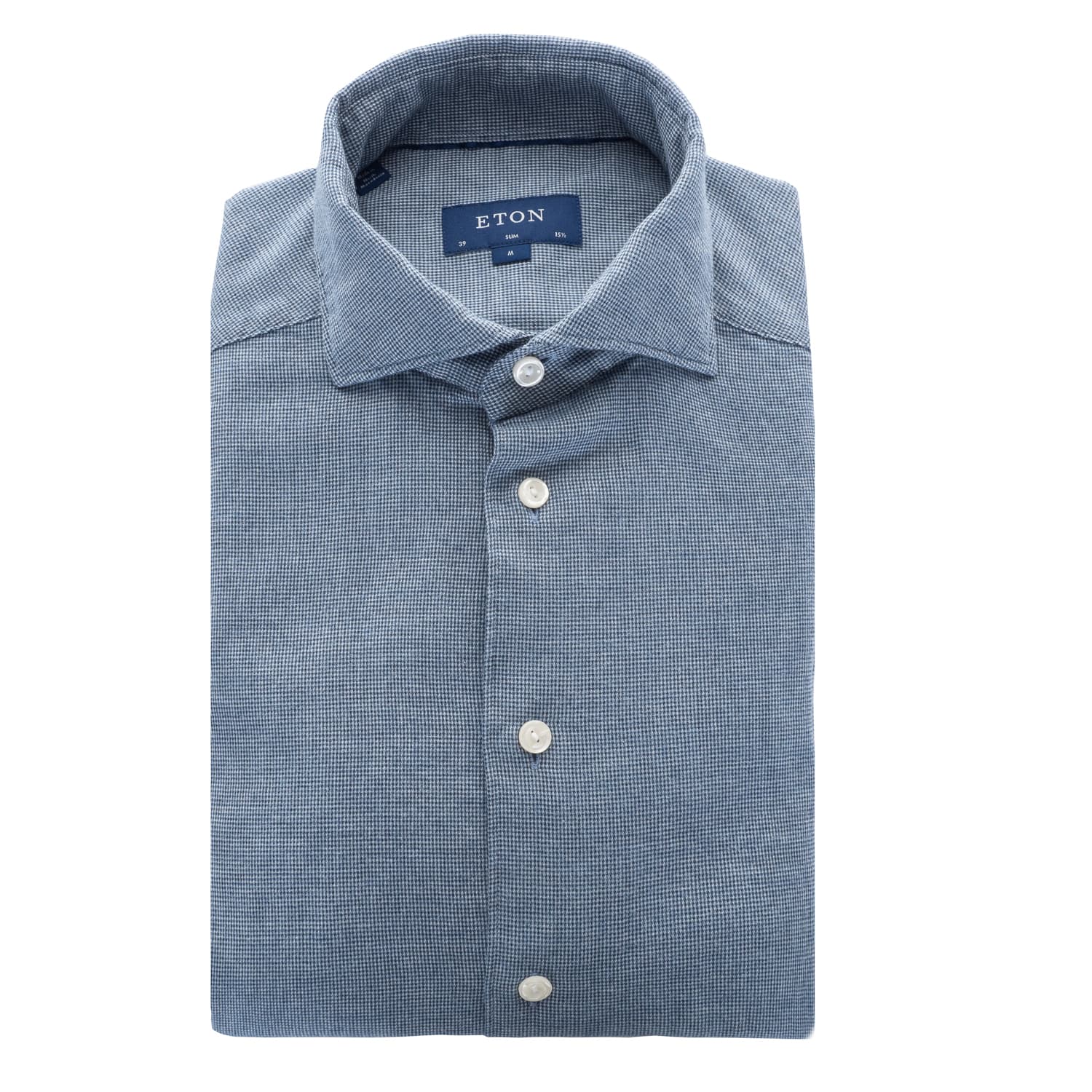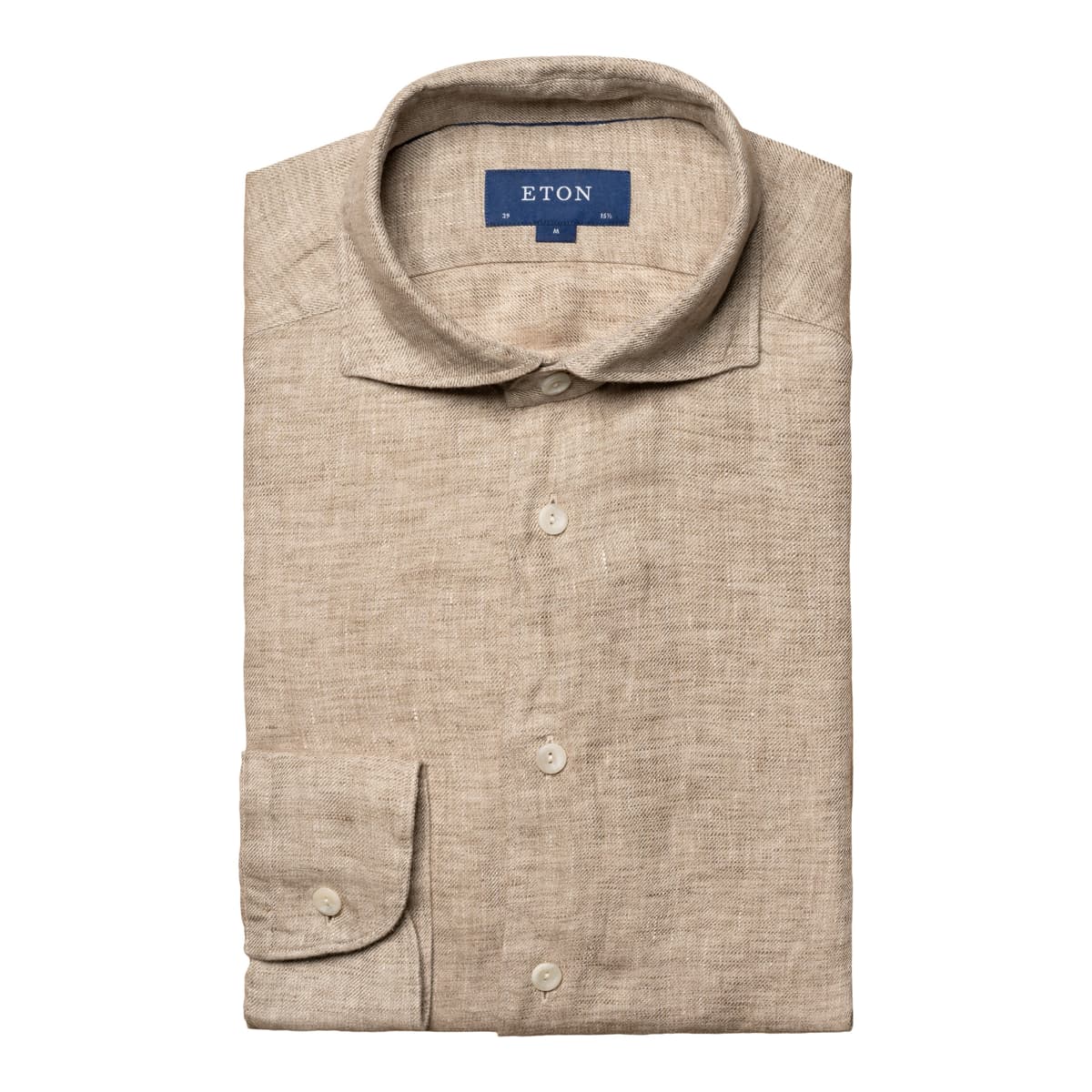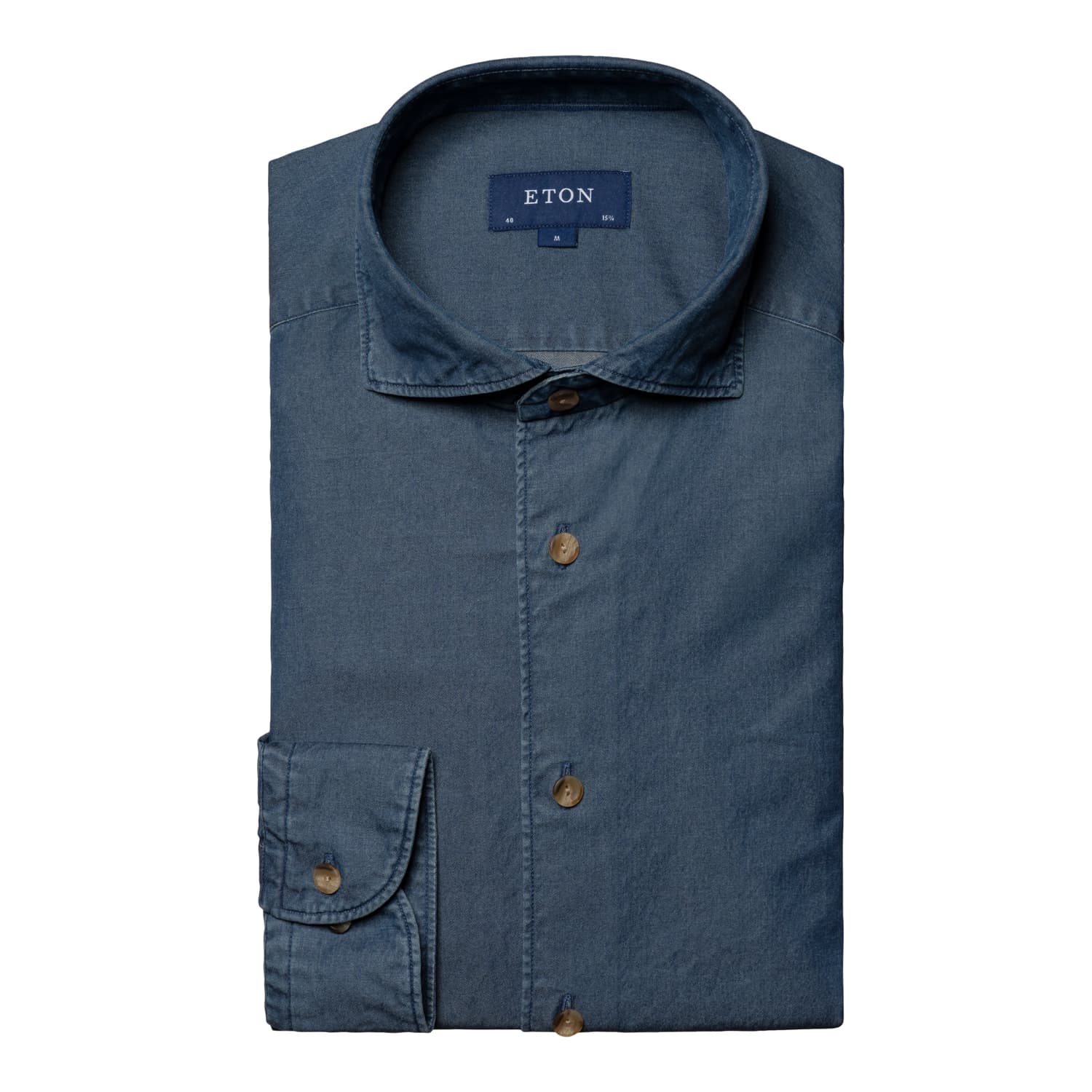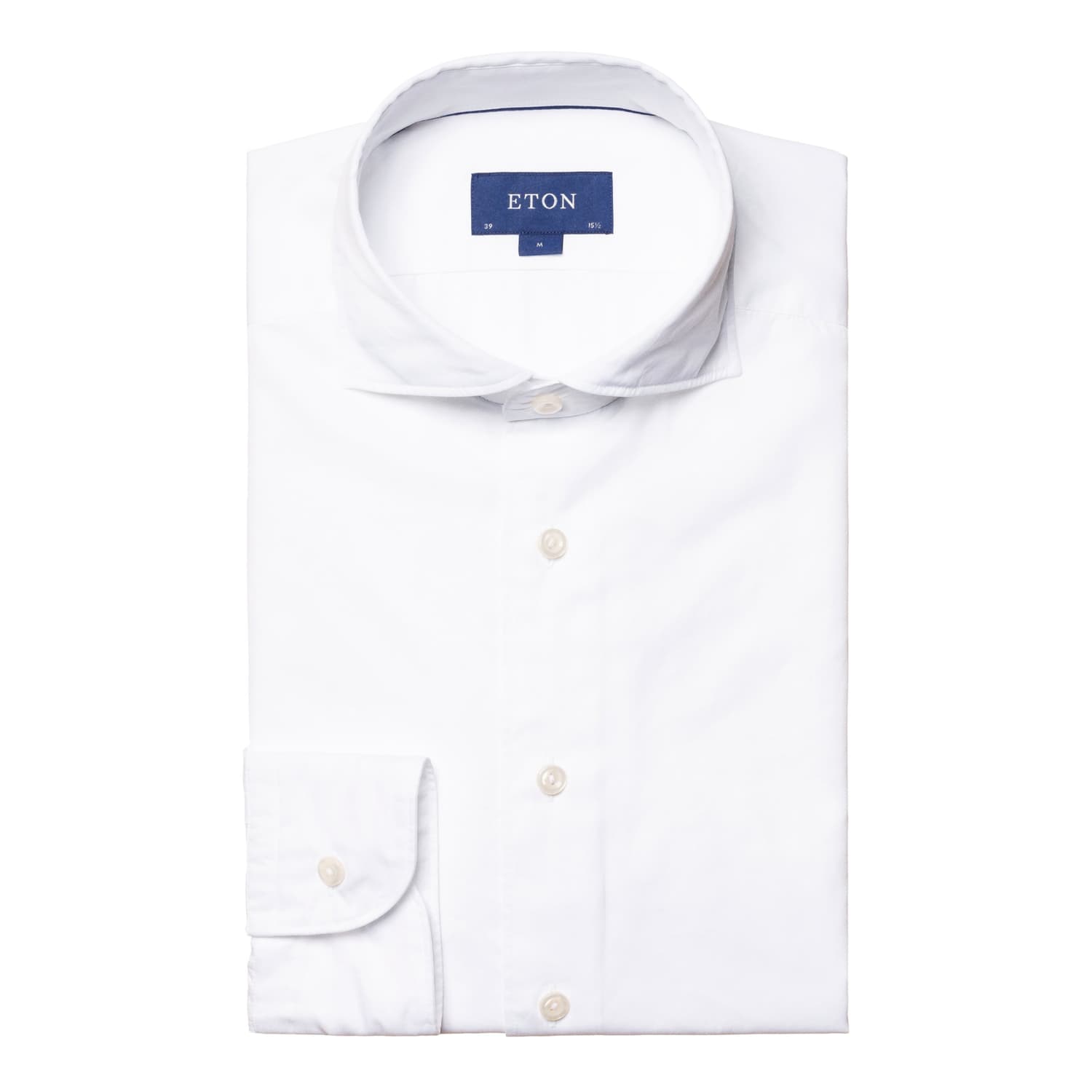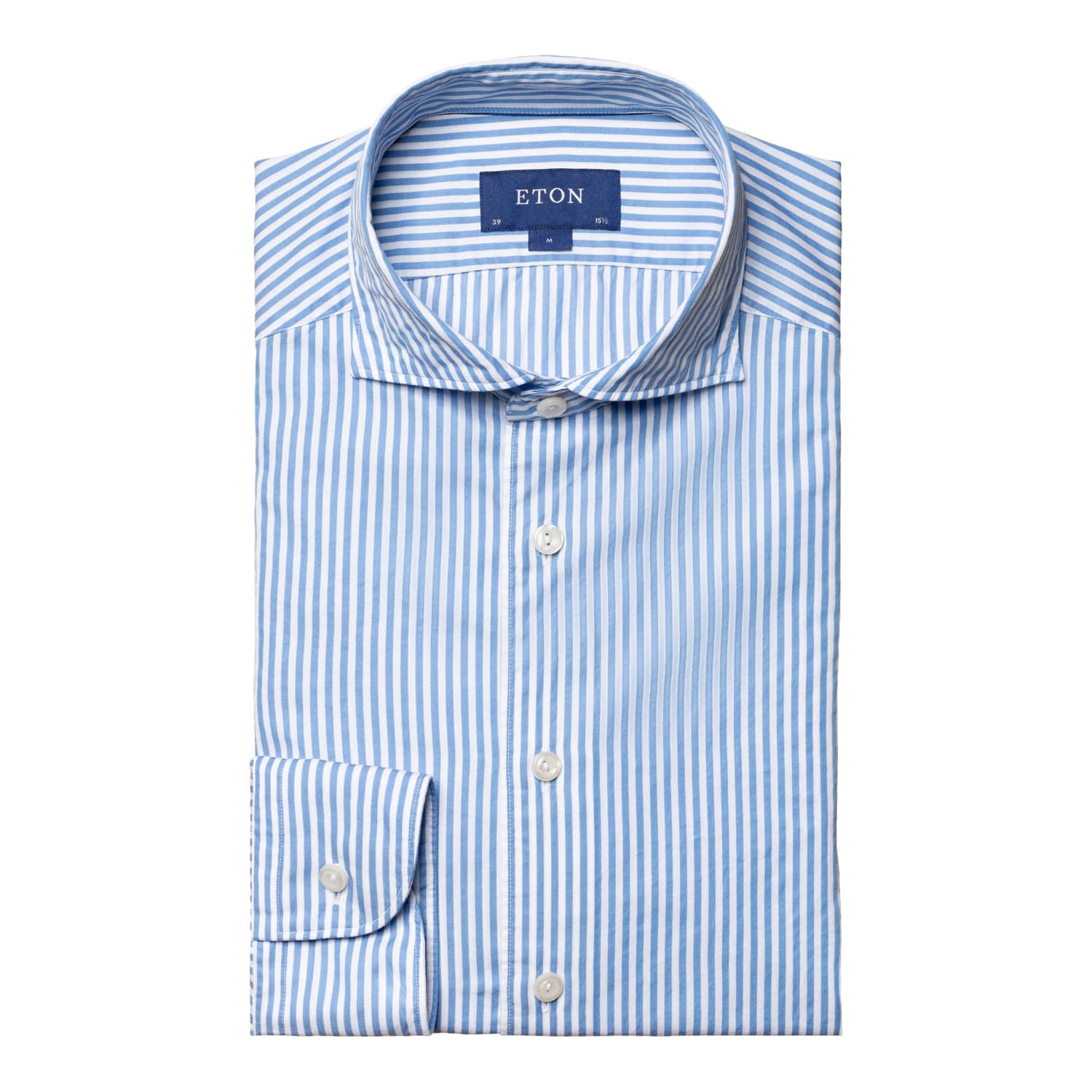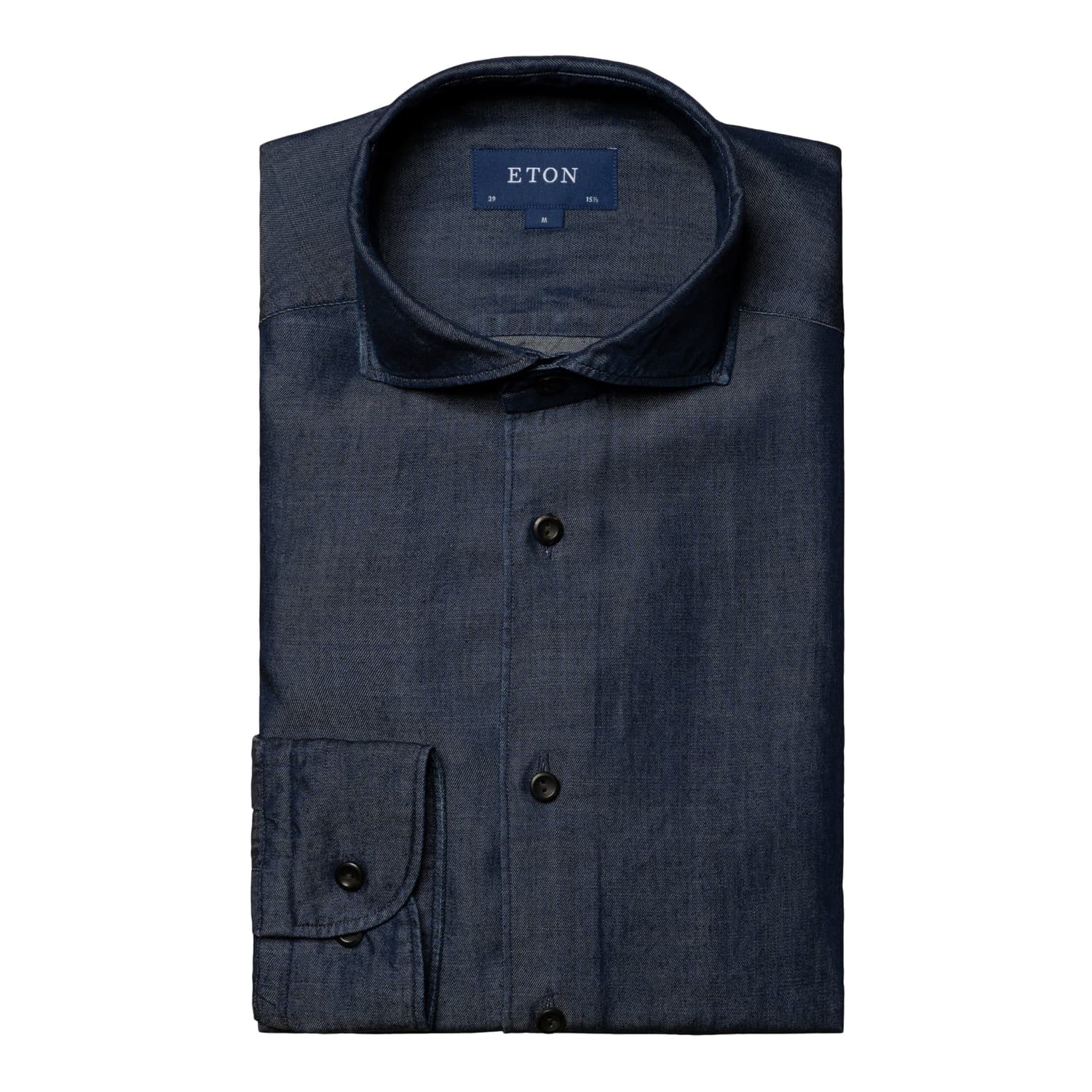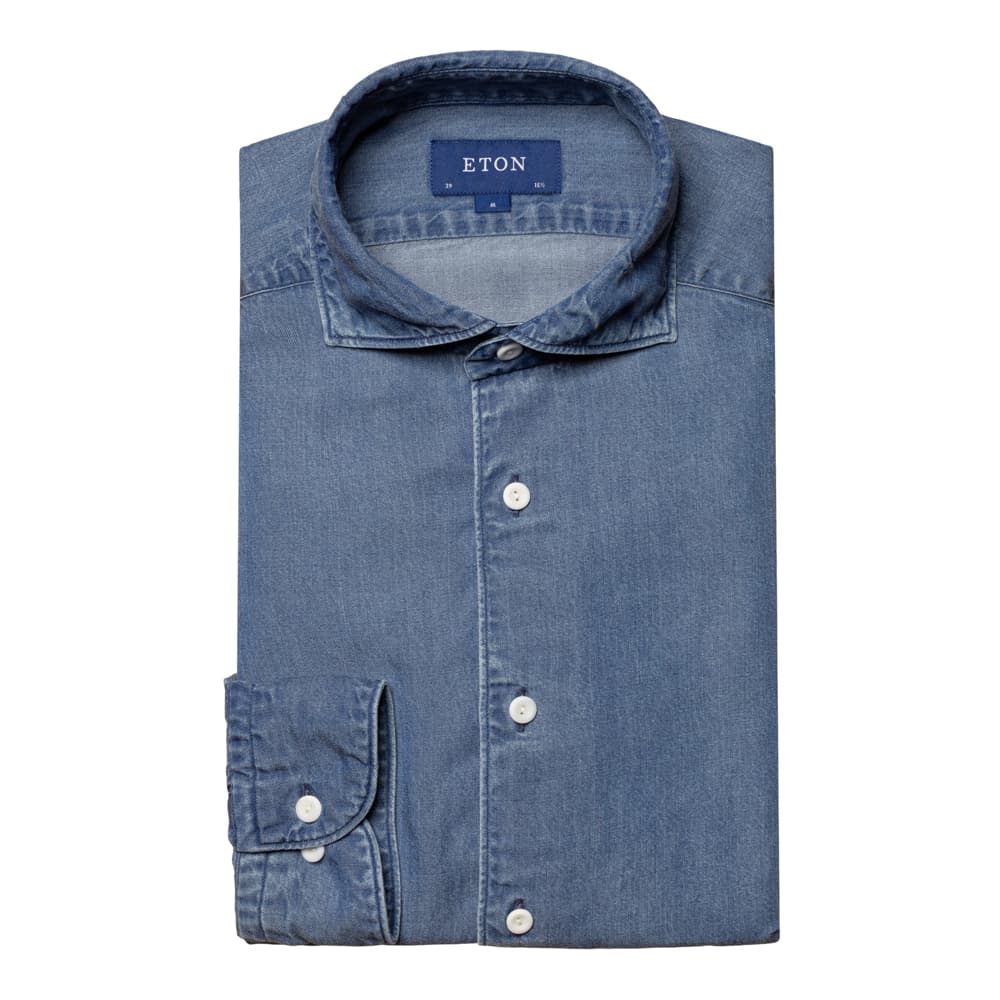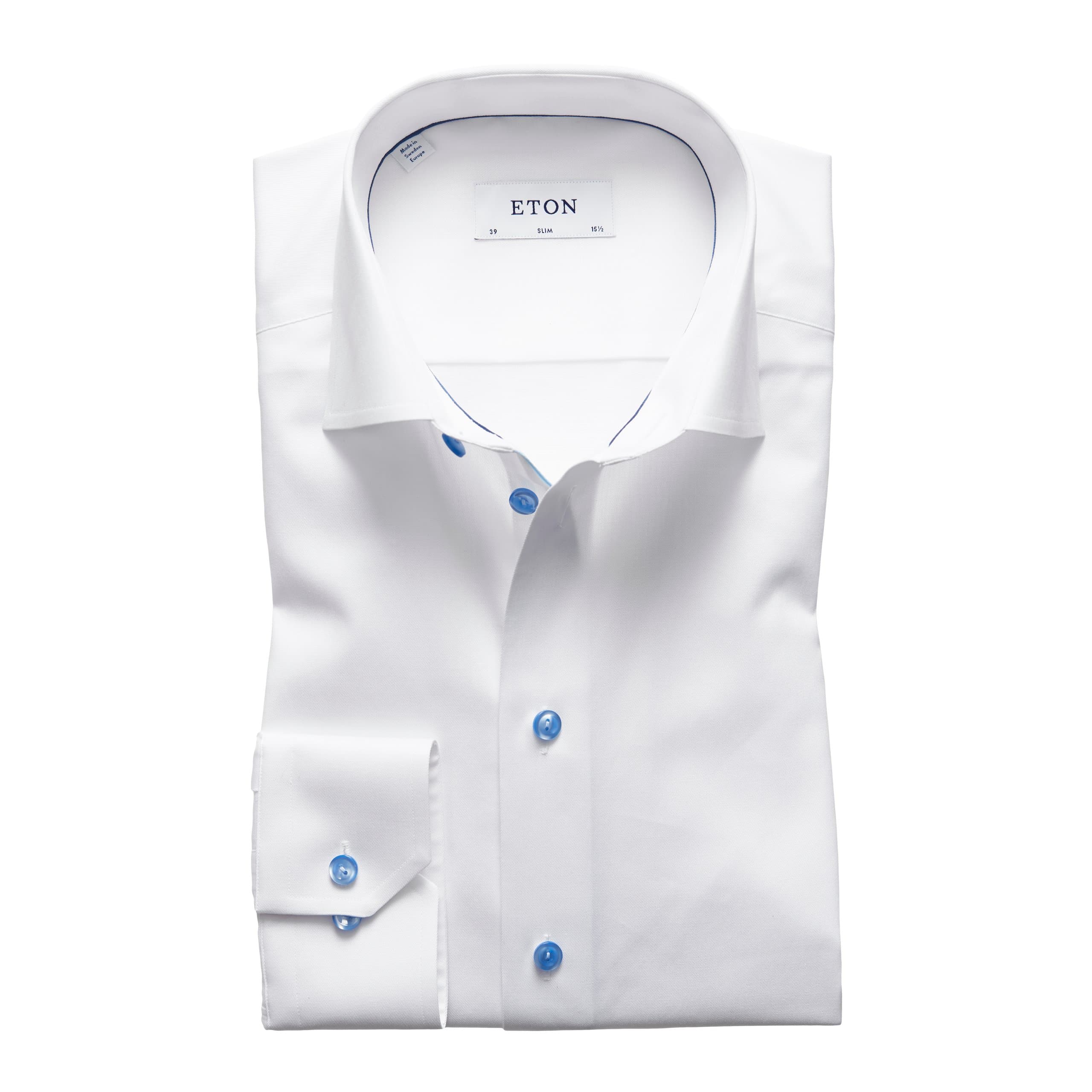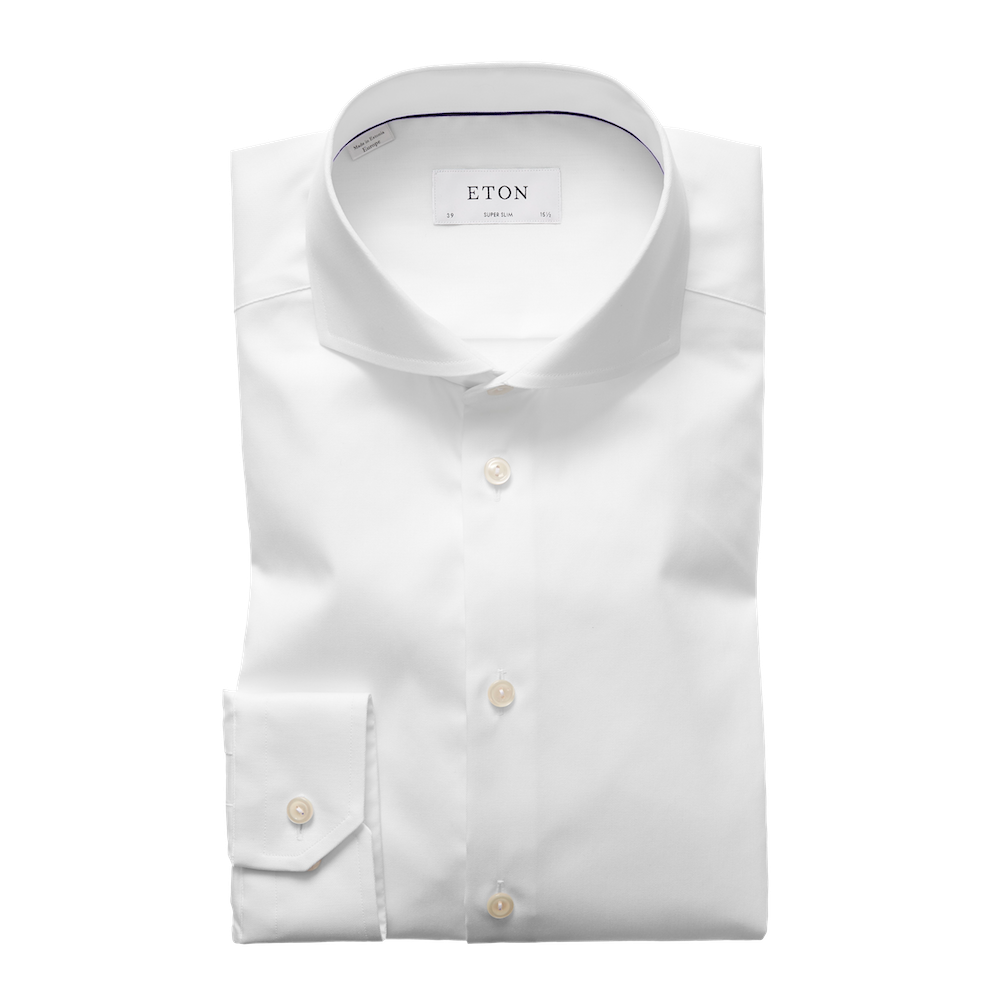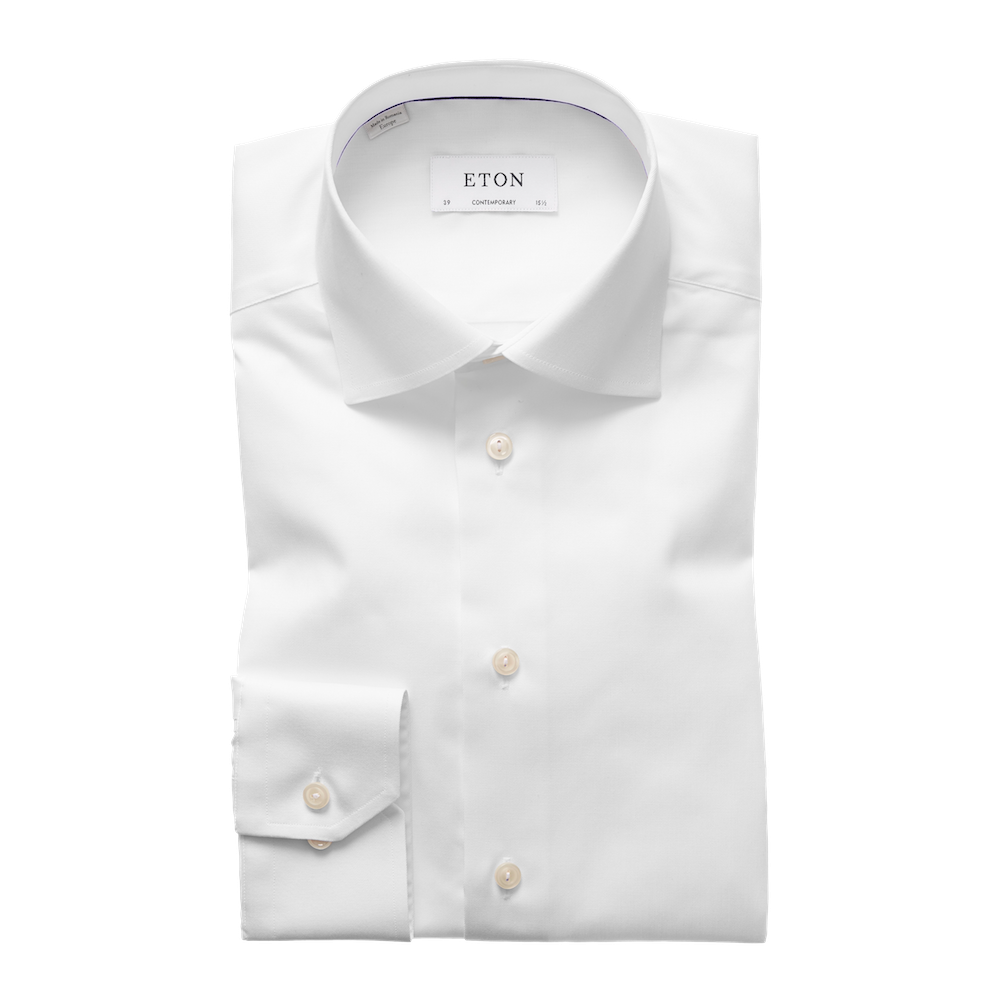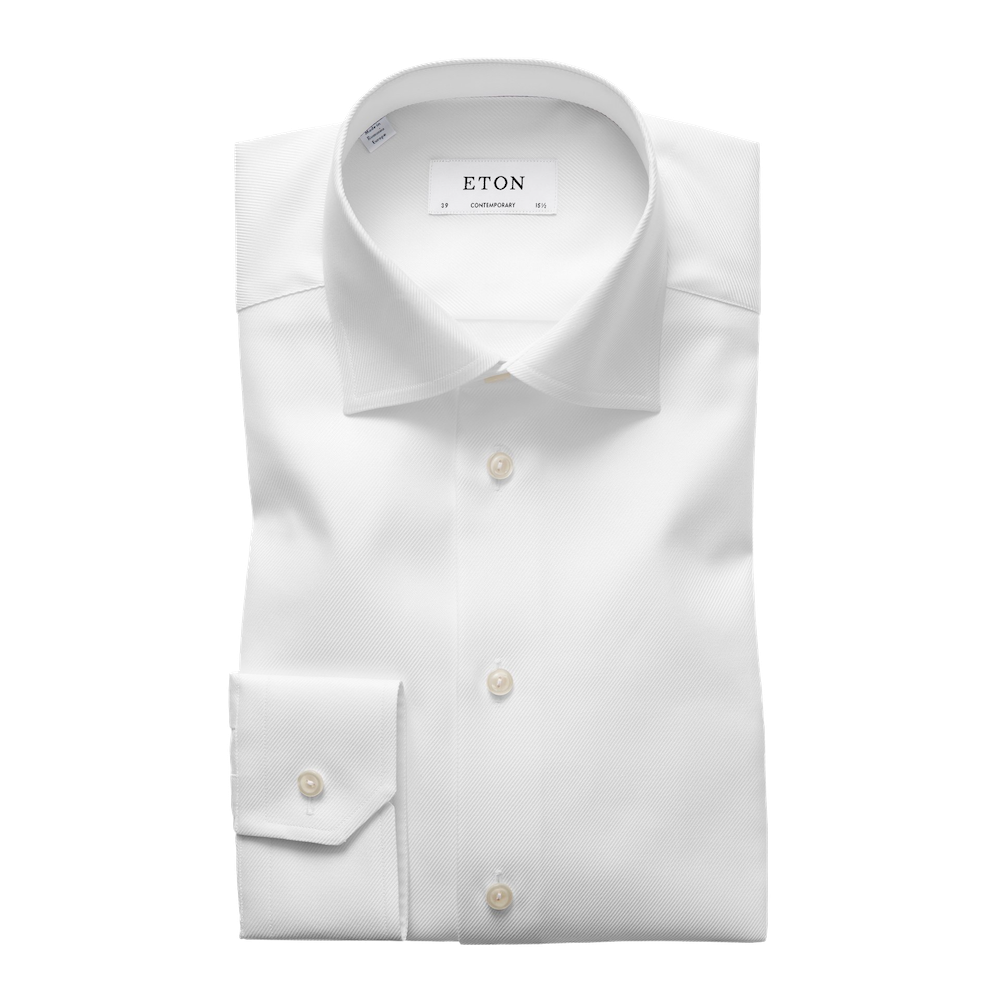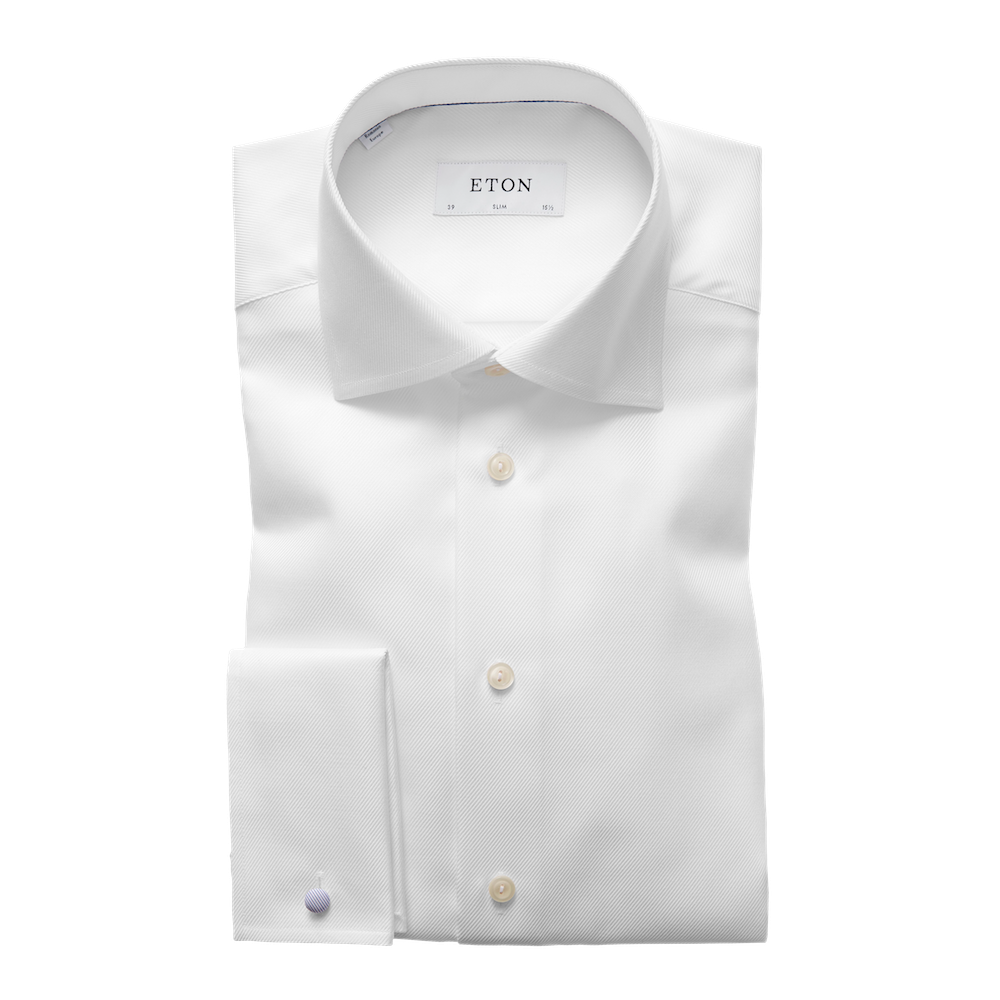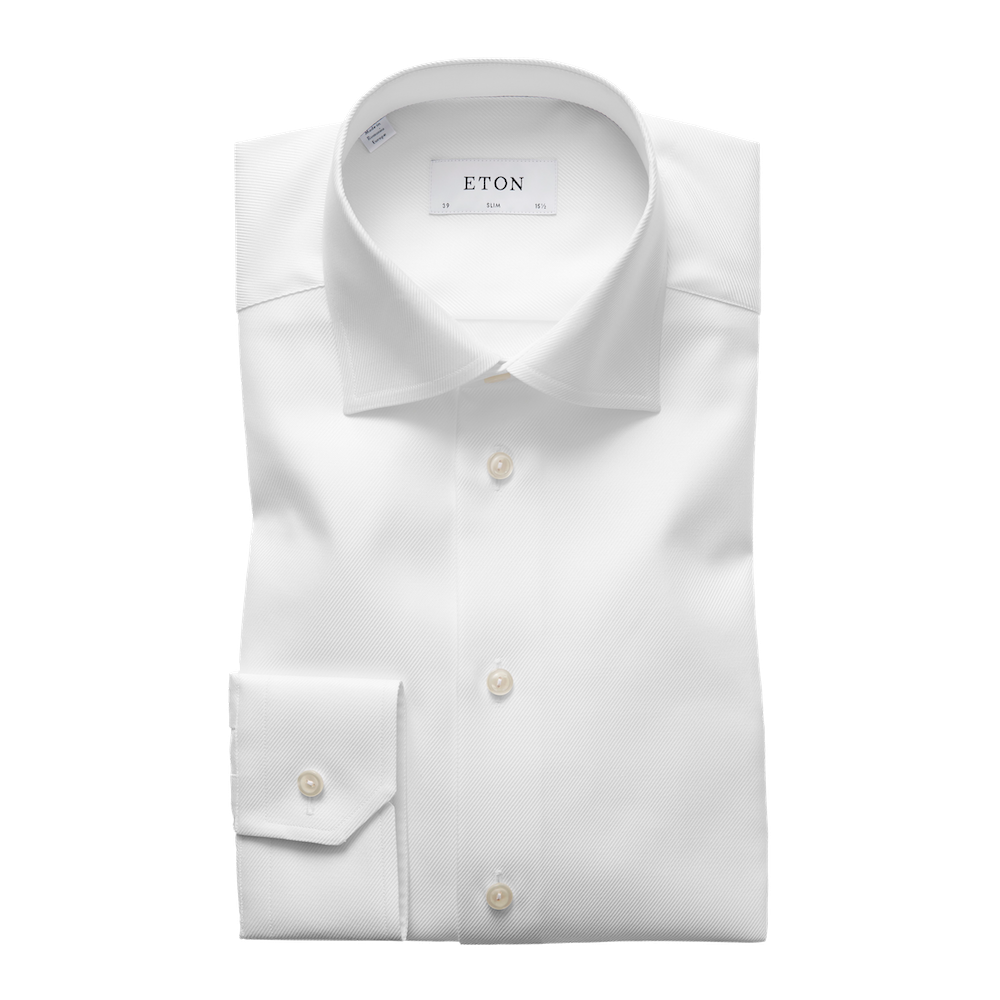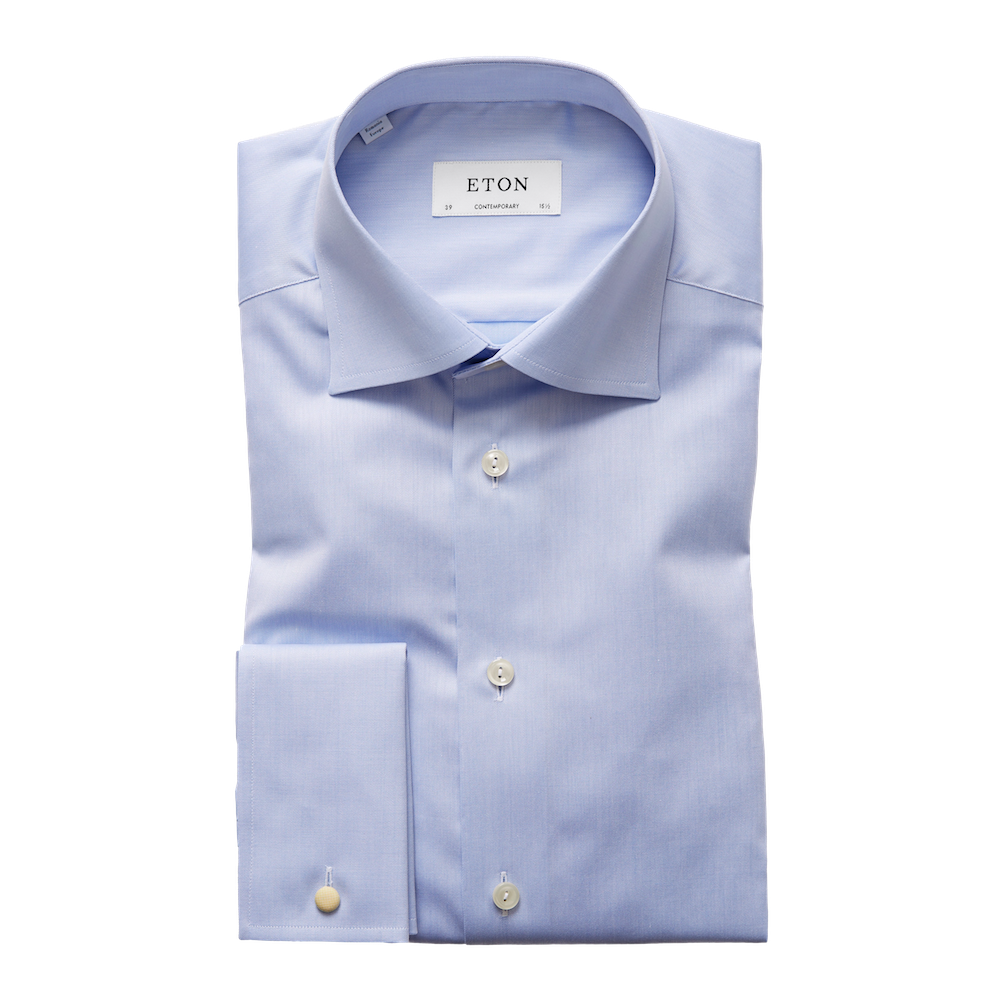history

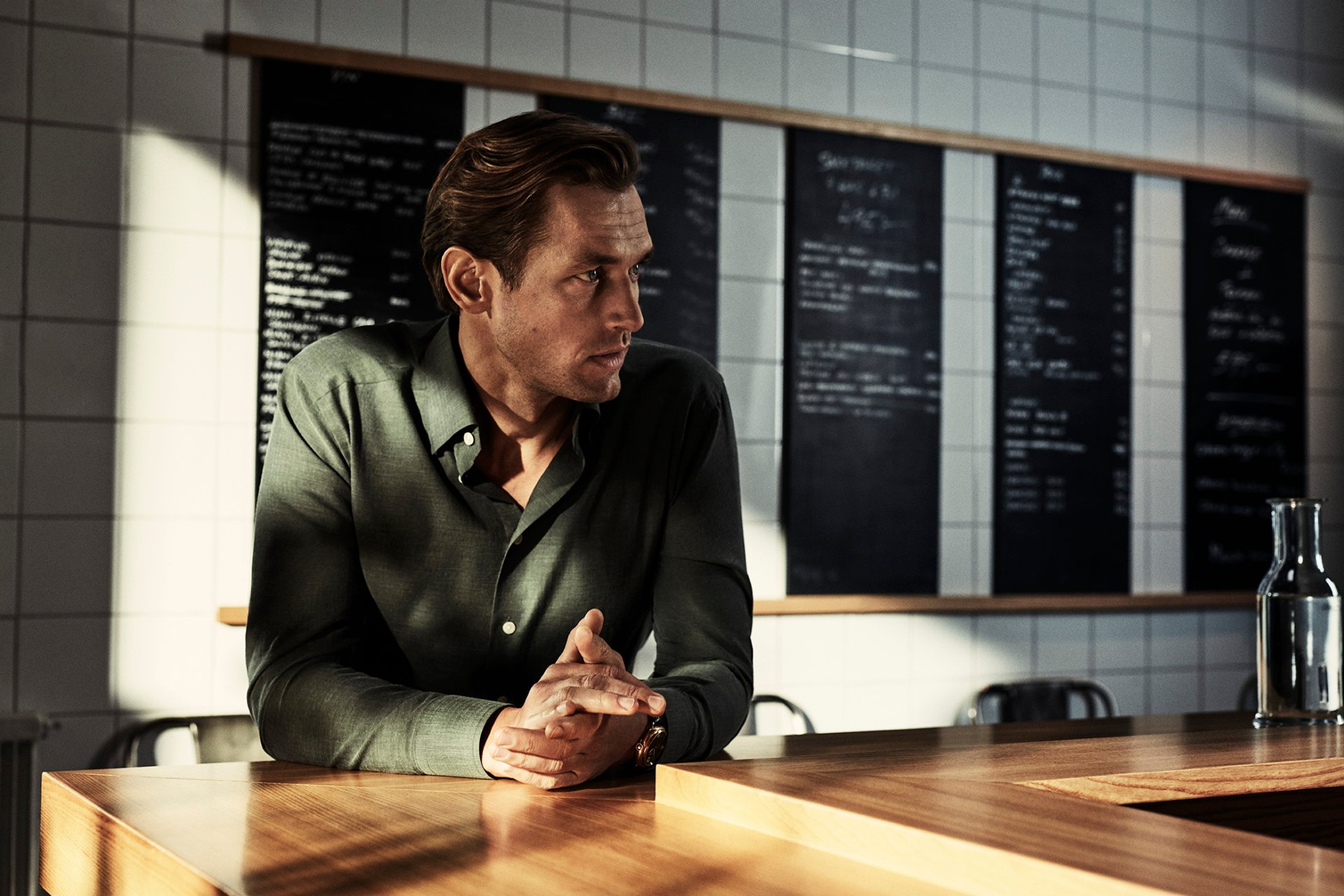
The history from Eton
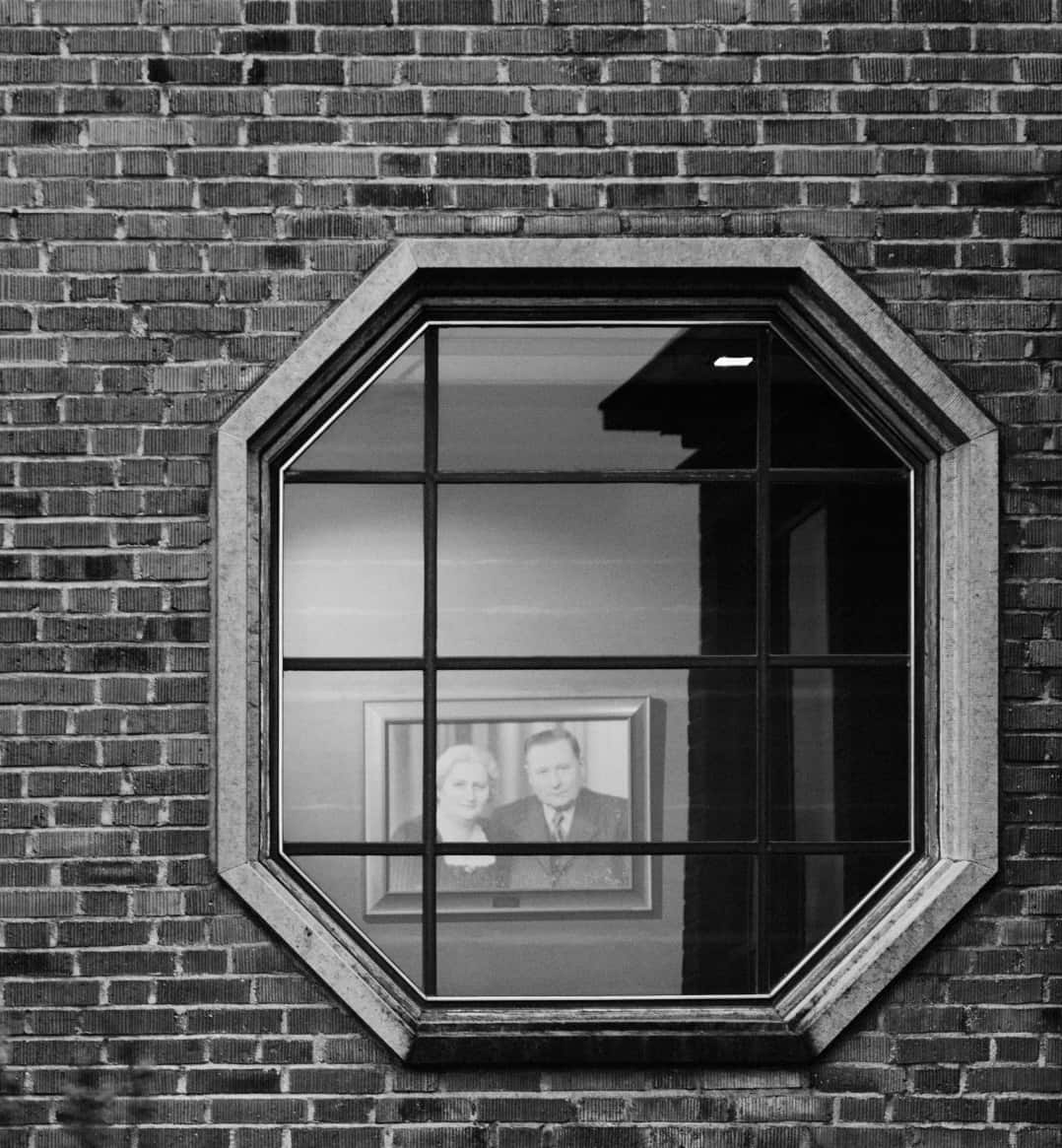
1928
The company history of Eton is also the life story of the founding couple David and Annie Pettersson.
It all began in the kitchen of the newly married couple, as Annie Pettersson and her cousin sewed clothes for their family and neighbors in the early years of their marriage. When the Great Depression struck in the 1920s, her husband David Pettersson, who had been running the family sawmill until then, had no choice but to close it down. He joins his wife's business, which grows rapidly. In both their names, they founded the company Syfabriken Special (Sewing Factory Special) and specialized in the production of men's shirts.
1934
The company name “Special” already conceals the unique division of the production process into different parts. Instead of one seamstress sewing all the shirt parts together, Pettersson assigns the different parts to different seamstresses. The specialization of the workers not only saves time, but also improves quality. The seamstresses soon develop great skills in their respective areas of work. David and Annie Pettersson's children - Rune, Arne, Sigge, Inge and Karin - learn the different parts of the production process from the ground up. The four brothers will one day play an important role in the company.
1938
The company Syfabriken Special has grown and needs larger working areas. The Petterssons move into new premises. It is the plant that David Pettersson had lost during the economic crisis. In order to be able to afford the rent, the couple share the building with other businesses, including a shirt manufacturer, a small shoemaker's shop and a post office. As the company's order books are always full, Annie and David expand their business and take over the entire building. The seamstresses work on the first floor, while the patterns are designed on the top floor. As money is still tight, the floors in between serve as an apartment for the Pettersson couple for several years.
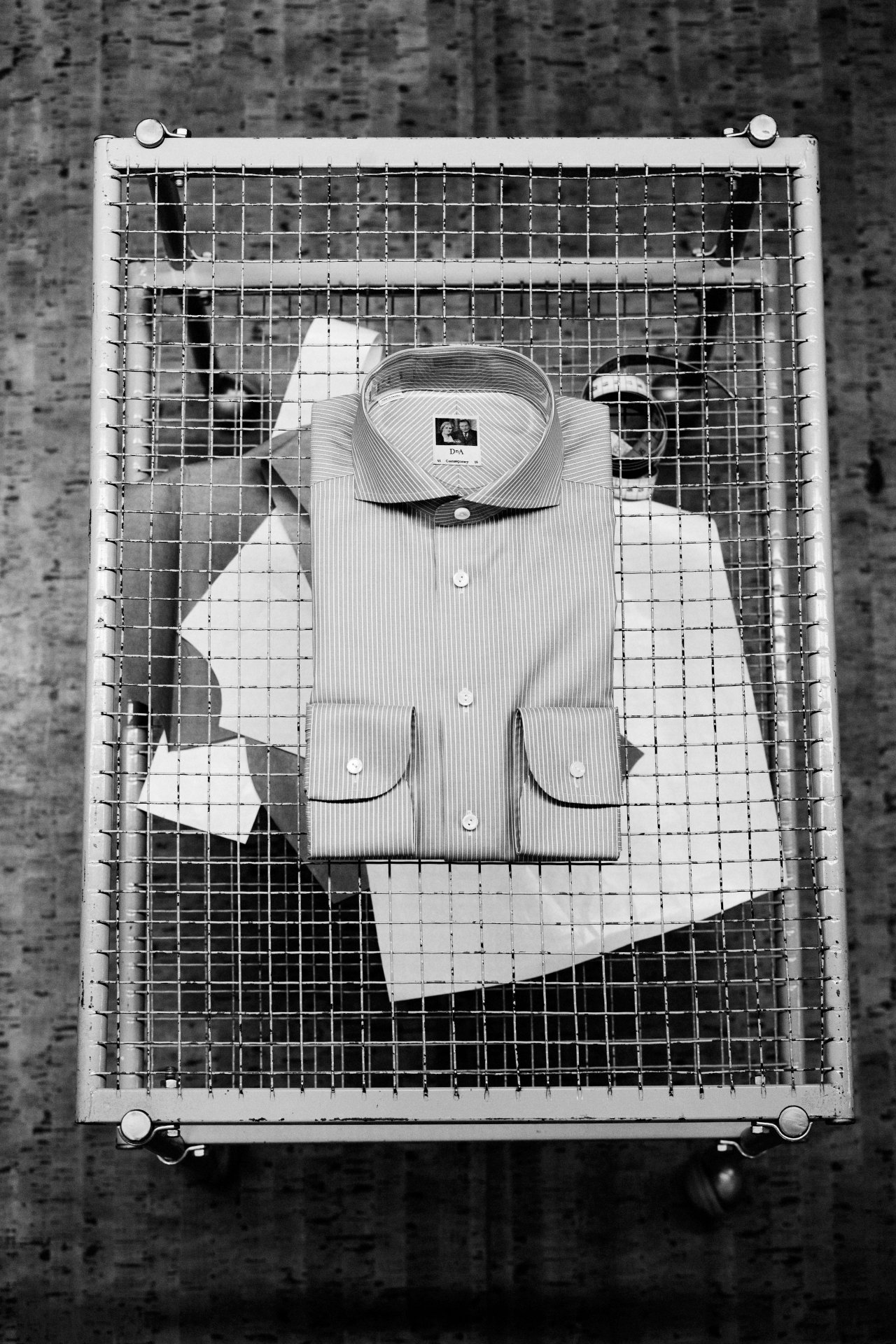

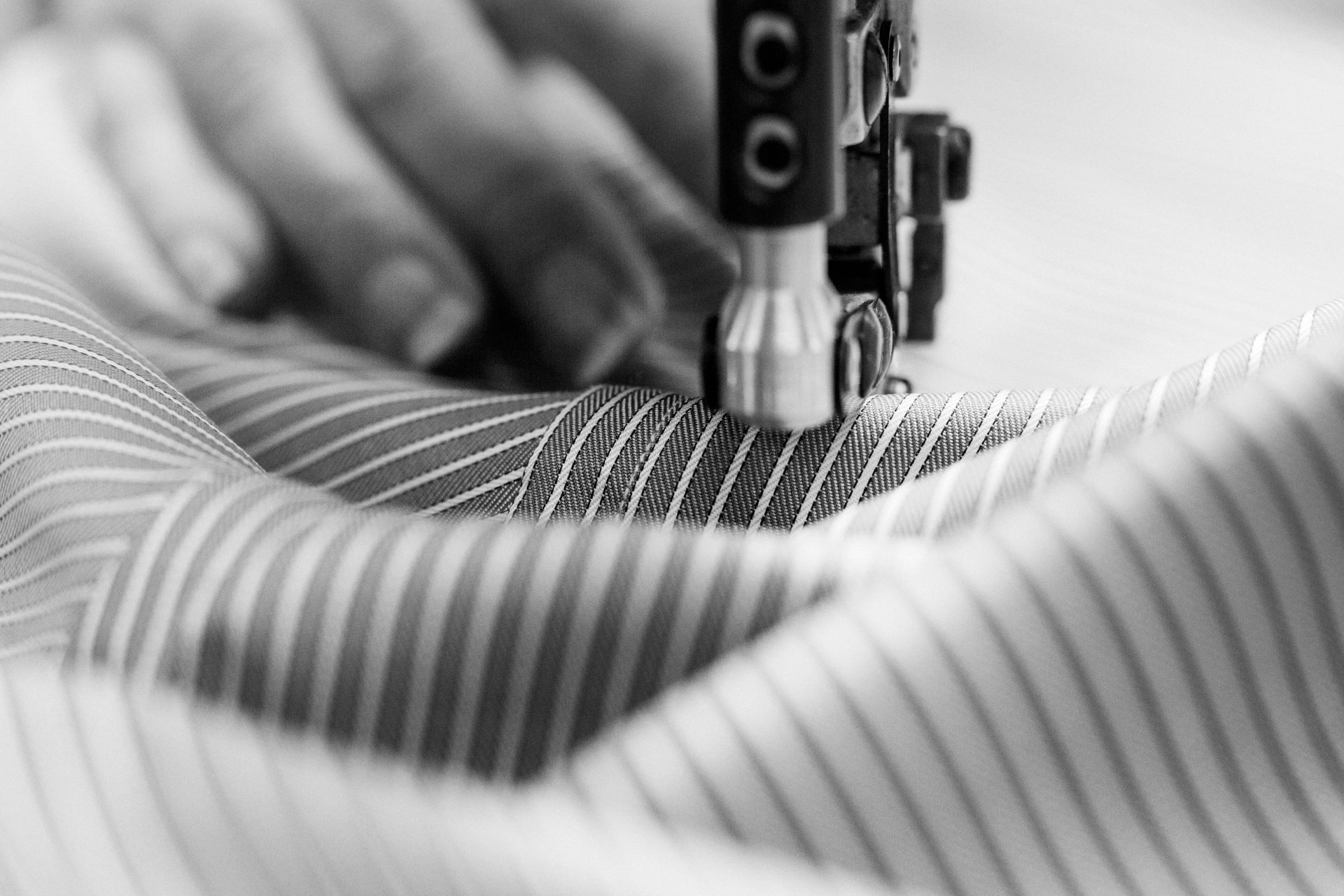
1945
After the end of the Second World War, high-quality textiles and fabrics are finally available again without restrictions. As a result, the Pettersson company can once again select the best materials for its shirts. The production of shirts is now the main focus and the company Syfabriken Special is renamed Skjortfabriken Special (Special Shirt Factory). The couple's four sons - Arne, Rune, Inge and Sigge - are now old enough to join the company.
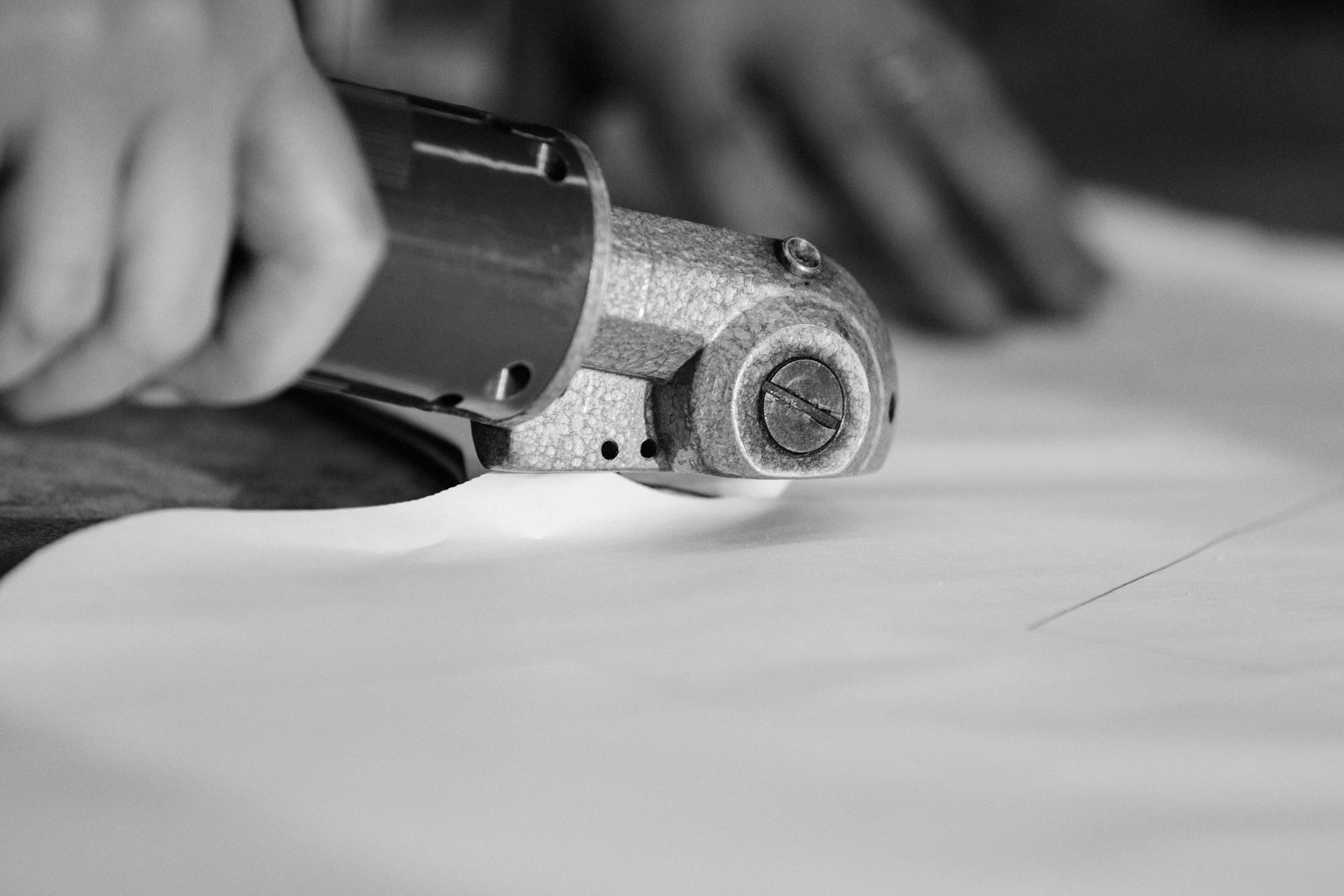
In connection with the name change, the strategic direction is also changed: the focus is now on direct relationships with retailers. With this goal in mind, the production of exclusive and modern shirts made of cotton poplin becomes increasingly important for the company. Quality is now at the heart of the company's success. “Never let a shirt out of your hands until it meets the highest standards” is the catchy motto coined by the company founders. The motto runs as a common thread through all parts of production and the brand constantly strives to further improve its shirts.
1948
Always on the hunt for new fabrics and materials suitable for exclusive shirts, Rune and Arne Davidsson (the sons of the founding couple Anne and David) travel the world. Their journey inevitably takes them to England, which has long been a world leader in high-quality fabrics. The Pettersson brothers visit the small town of Eton - the name exerts an enormous attraction on the two of them. They take it with them to Sweden, where a new shirt is launched on the market: “The Eton Shirt”.
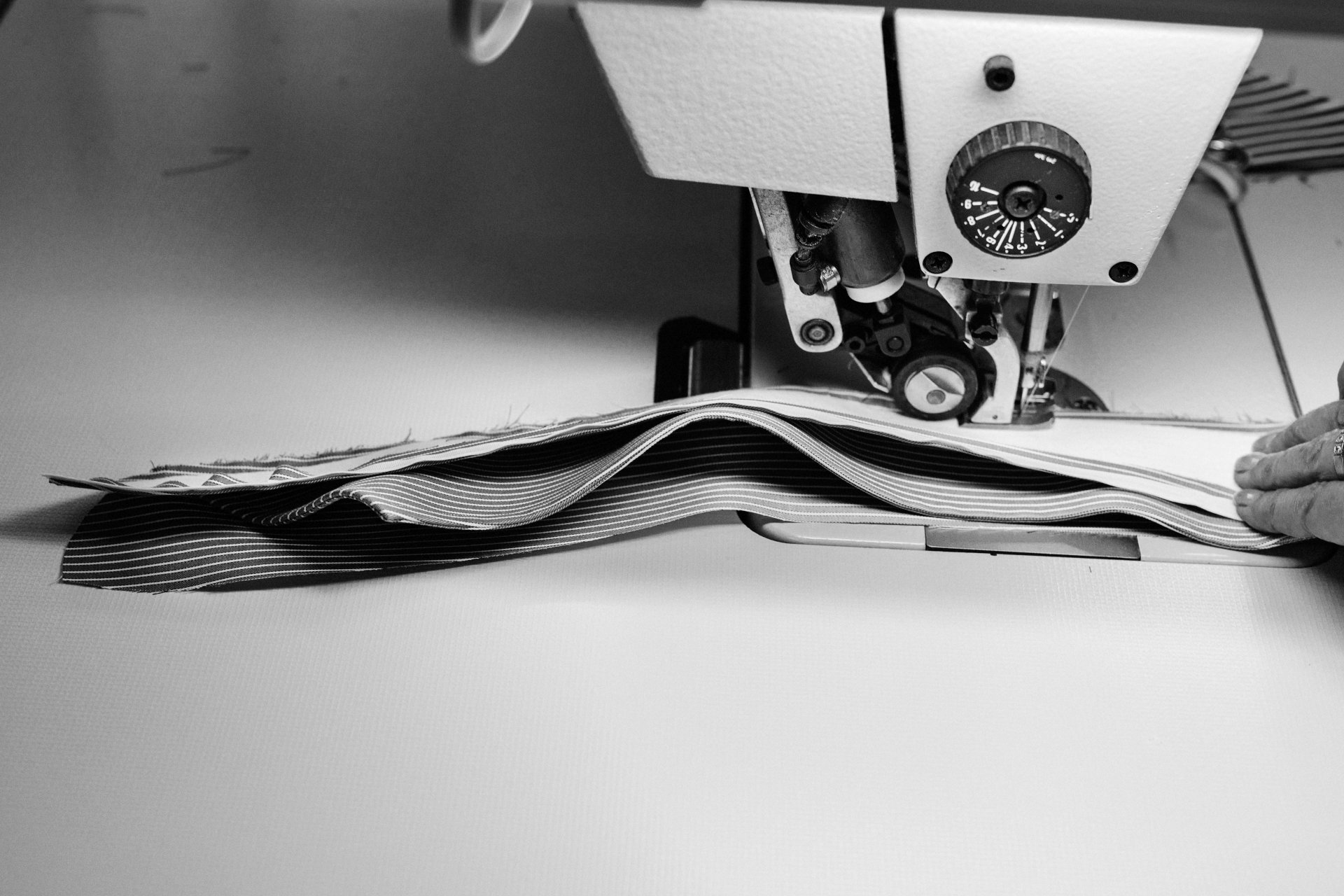
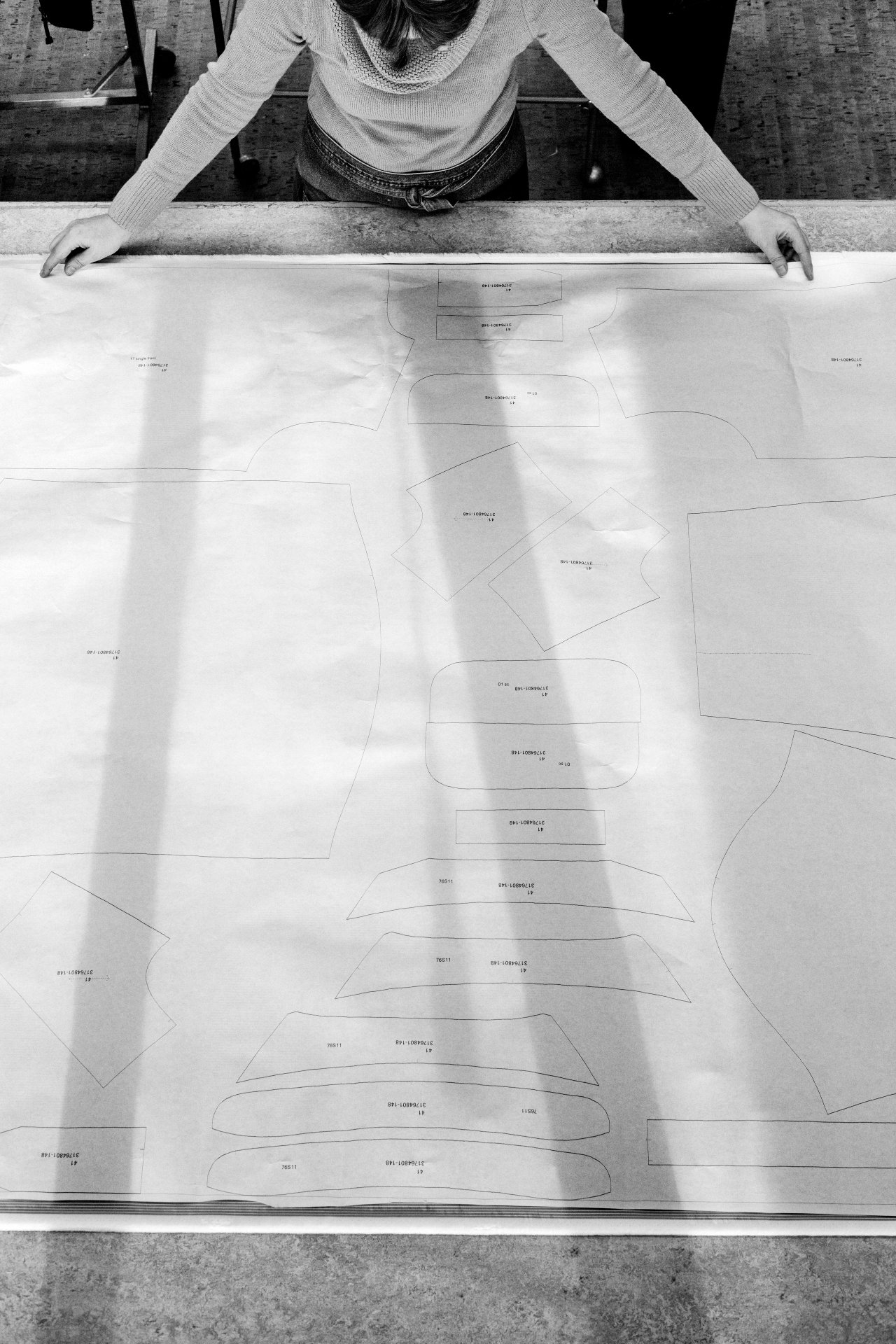
1949
From the very beginning, David and Annie Pettersson have been clear about one thing: satisfied employees deliver the best performance - especially when it comes to quality. A company spirit of togetherness and the well-being of the employees are of the utmost importance. The management organizes fishing and hunting trips as well as swimming trips for the entire company. The company even has its own amateur football team. At the end of the 1940s, language courses are organized in which Arne Davidsson teaches English. Eton also publishes an internal newspaper, which is given the name “Specialisten” (The Specialist). The newspaper aims to strengthen the motivation of the workforce. It is published annually and covers current company events, which are described with a large dose of humor. For several years, the employees look forward to each new edition with anticipation.
1950
In the 1950s, Skjortfabriken Special, “the shirt factory special”, is so well known for “The Eton Shirt” that the company chooses “Eton” as its new name. Demand increases so much that the production facilities are bursting at the seams. The company urgently needs to find new premises. Determined not to leave its home town of Gånghester, work begins on the design of a new factory, which is ultra-modern by the standards of the time. Inge, the son of the founding couple, provides the innovative technology for the company, which later forms the foundation of a company of its own.

1955
Eton has made a name for itself with its high-quality products. However, the company was still struggling to get its message through to suitable dealers. To tackle the problem, the company hires a new sales team, including Rune Hallgren. Despite his more than limited knowledge of English, Hallgren manages to set up a meeting with a small British clothing boutique. After a thorough examination of Eton's exclusive craftsmanship, the owner decides to take the plunge. This resulted in a small trial order and the brand's first success on the market, which was soon to become one of the most lucrative.
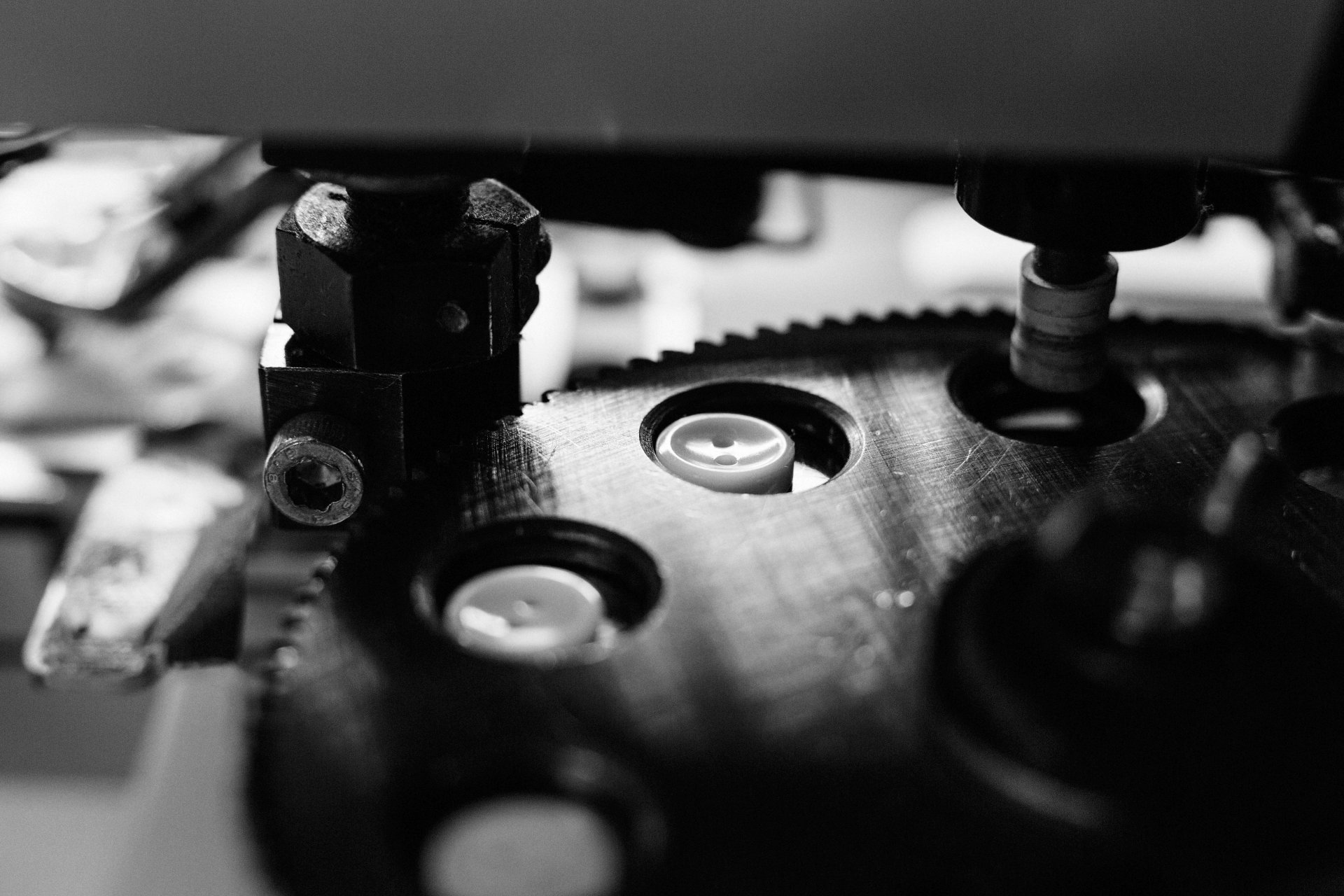
1968
Following the installation of the automated conveyor line by Inge Davidsson (the son of Eton founders David and Annie), the factory practically doubles in size. Rune Davidsson takes over the company from his three brothers. While Arne and Sigge go into farming, Inge founds his new production company - Eton Systems - with automated hangers as its main product. Today, more than 4000 automated hangers from Eton Systems are installed in more than 60 countries.
1972
Annie Pettersson dies at the age of 78. The company not only mourns the loss of an extremely popular colleague. The energy that set the high-quality manufacturing process in motion in 1928 is also sorely missed. To this day, Annie Pettersson's philosophy remains a common thread running through the company: “You must never let a shirt out of your hands until it meets the highest standards”.
1976
Just four years after the death of the company founder, Eton suffers another great loss: Rune Davidsson dies after a two-year battle with cancer. In his more than 20 years as head of Eton, Rune Davidsson played a key role for the company. His ideas and strength of will marked the beginning of a new era for the company.
1977
In the vacuum created by the loss of the company director, the marketing and sales managers also leave the company. In addition, Eton had difficulties finding motivated seamstresses and the company labored over an old-fashioned collection - as a result, the company entered one of its most difficult periods. Eton continues to focus on quality and exclusivity and customers remain loyal to Eton, even though other textile companies around the company fall like dominoes. The company got away relatively unscathed in the price competition and continued to grow in the 1970s.
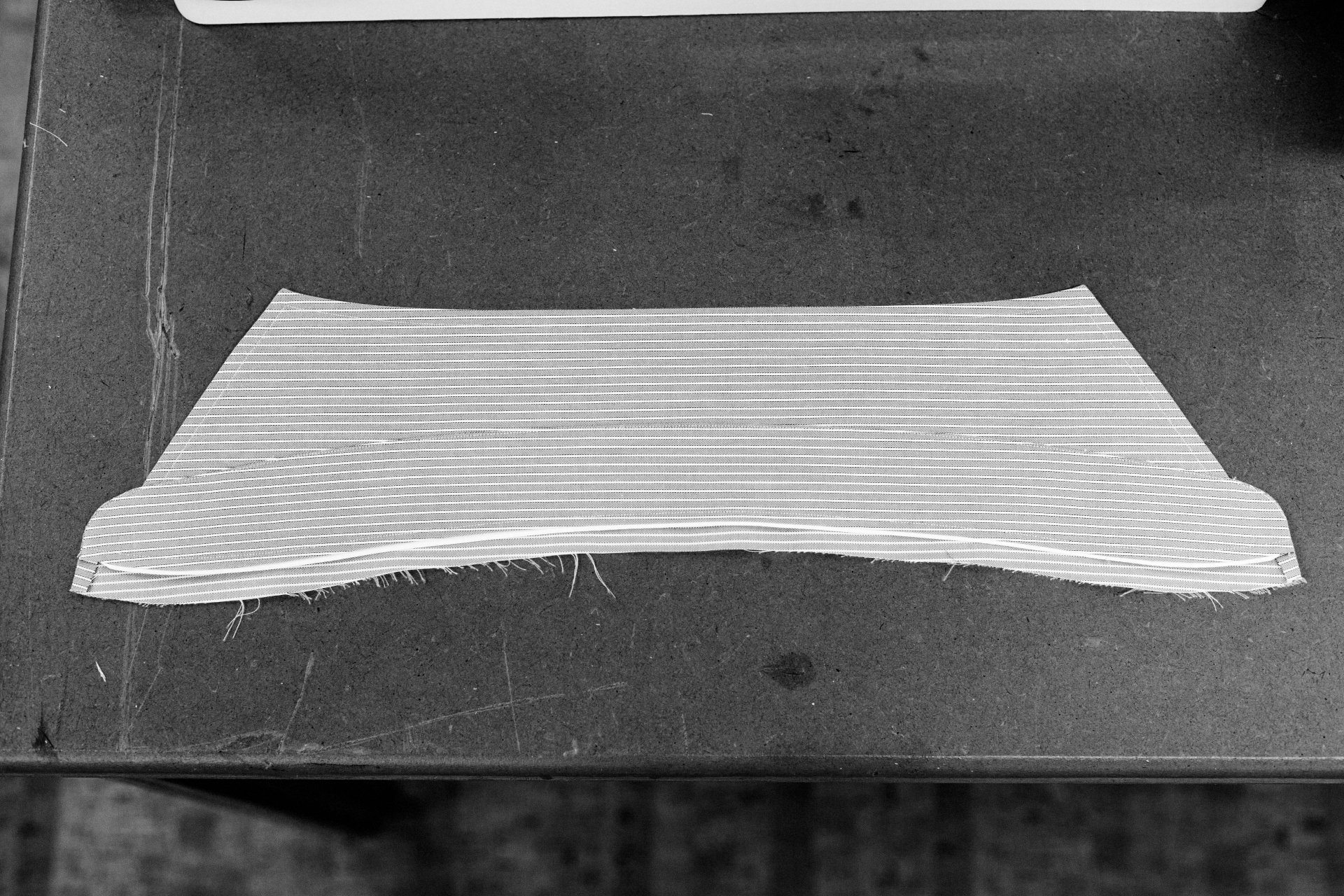
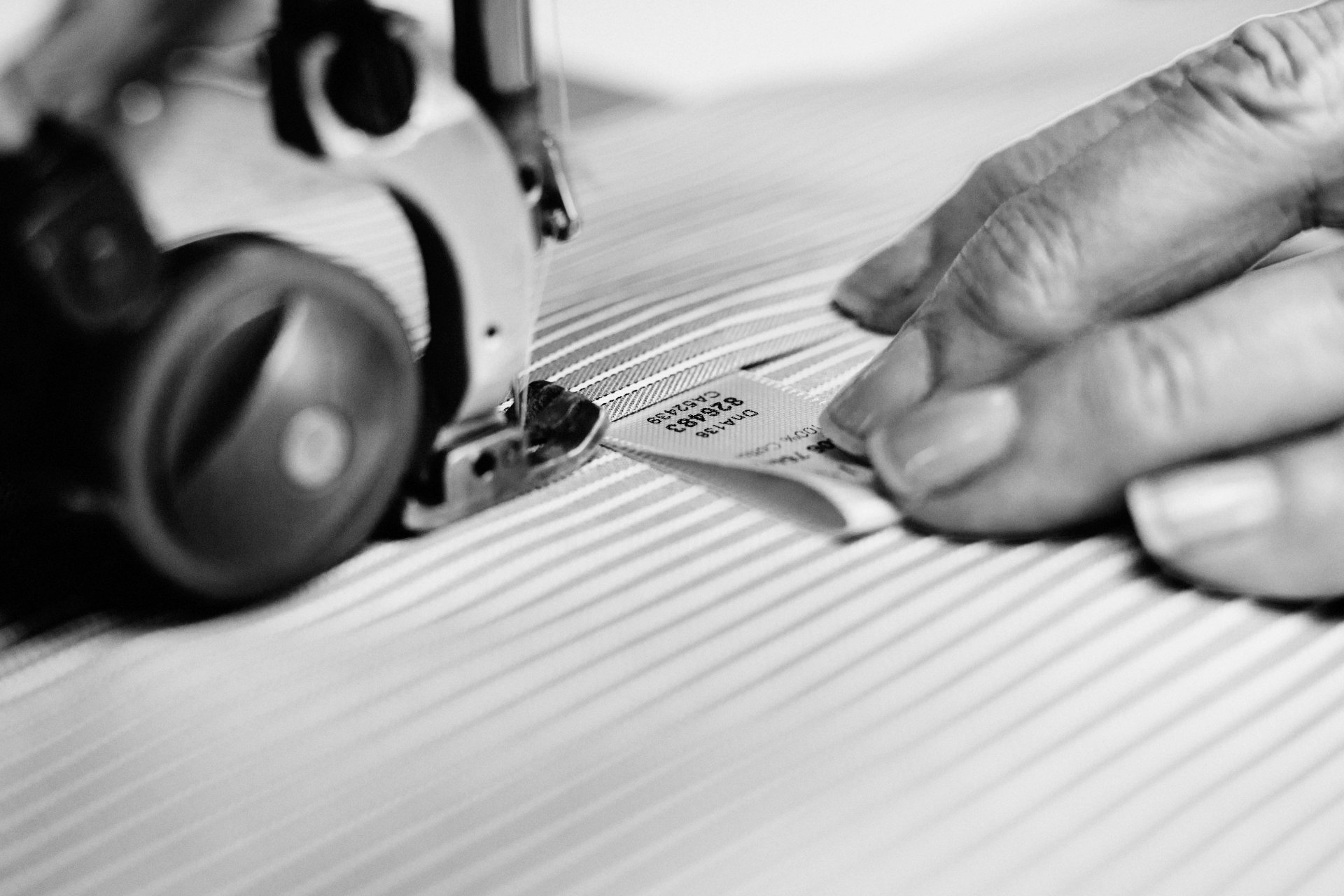
1981
Thanks to talented newcomers, Eton experiences a new heyday and increasingly focuses on developing its corporate identity. Jan Borghardt, a Dutch luminary in shirting and the company's new designer, selects high-quality fabrics from Italian, French and Swiss mills. With innovative materials, a timeless design and the new signature collars, Eton strengthens its reputation as a successful, exclusive shirt manufacturer.
“I was greeted by a warm, informal company atmosphere - attributes that don't fit Eton shirts at all,” says Borghardt. “Everyone in the company had their own vision of what the collection should look like. What we lacked was our own line. I realized this when I was asked by a customer why he should buy Eton shirts. It was the best question anyone had ever asked me. It made me realize that we had to develop our own profile. By twisting threads in different colors, we began to create our own materials. Although the efforts were small changes, they were an extremely important step on the way to our future company structure.”
1984
The company establishes relationships with some of the world's most exclusive retailers - in places where the brand's craftsmanship and details are particularly appreciated. In addition, the new advertising slogan “No shirt is more carefully sewn” is coined. This slogan communicates the founding couple David and Annie Pettersson's passion for inimitable shirtmaking and accurate craftsmanship, which is recognizable in every Eton product.
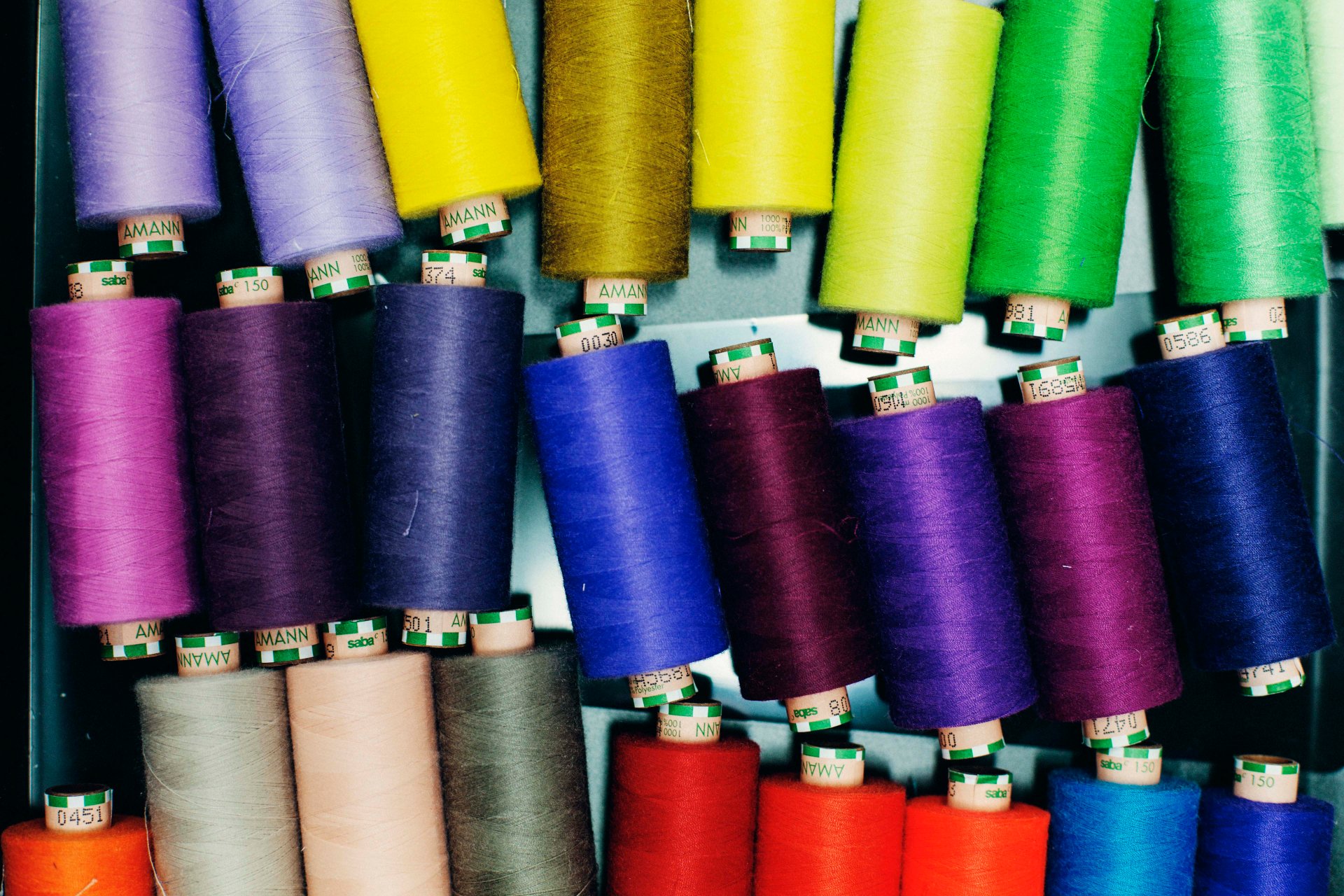

1986
Five years after Jan Borghardt was appointed Creative Director of Eton, Hans Davidson, Rune Davidson's son, joined the company and became Managing Director in 1986. Until then, Hans Davidsson worked on the family farm before deciding to join the company. Hans Davidson grew up with the company. He vividly remembers his father sitting at home with fabric scissors and samples, designing the company's collections. As a boy, Hans Davidsson himself worked in the factory, cleaning and performing menial tasks. The duo played a pivotal role in the company's recovery and later achieved great success.
1987
Eton's exclusive positioning and effective advertising ensured that Swedish retailers such as Hans Allde and Lund & Lund, as well as foreign players such as Harrods, chose to shop at Eton. To continue this success, the brand gradually began experimenting with new advertising. The decision was made to photograph the shirts on models for the first time.
1991
A large part of the production will be relocated to Borås, Sweden (a well-known textile region in southern Sweden). The segment that was previously outsourced to Portugal will be transferred to an Estonian factory equipped with Eton Systems. The facility's proximity to Sweden will lead to more effective collaboration and improved quality control. At a time when many manufacturers are choosing to work with suppliers to save costs, Eton has decided to take the entire production process into its own hands. This allows it to monitor all aspects of the production of each shirt and ensure a quality that is hard to beat by the competition.
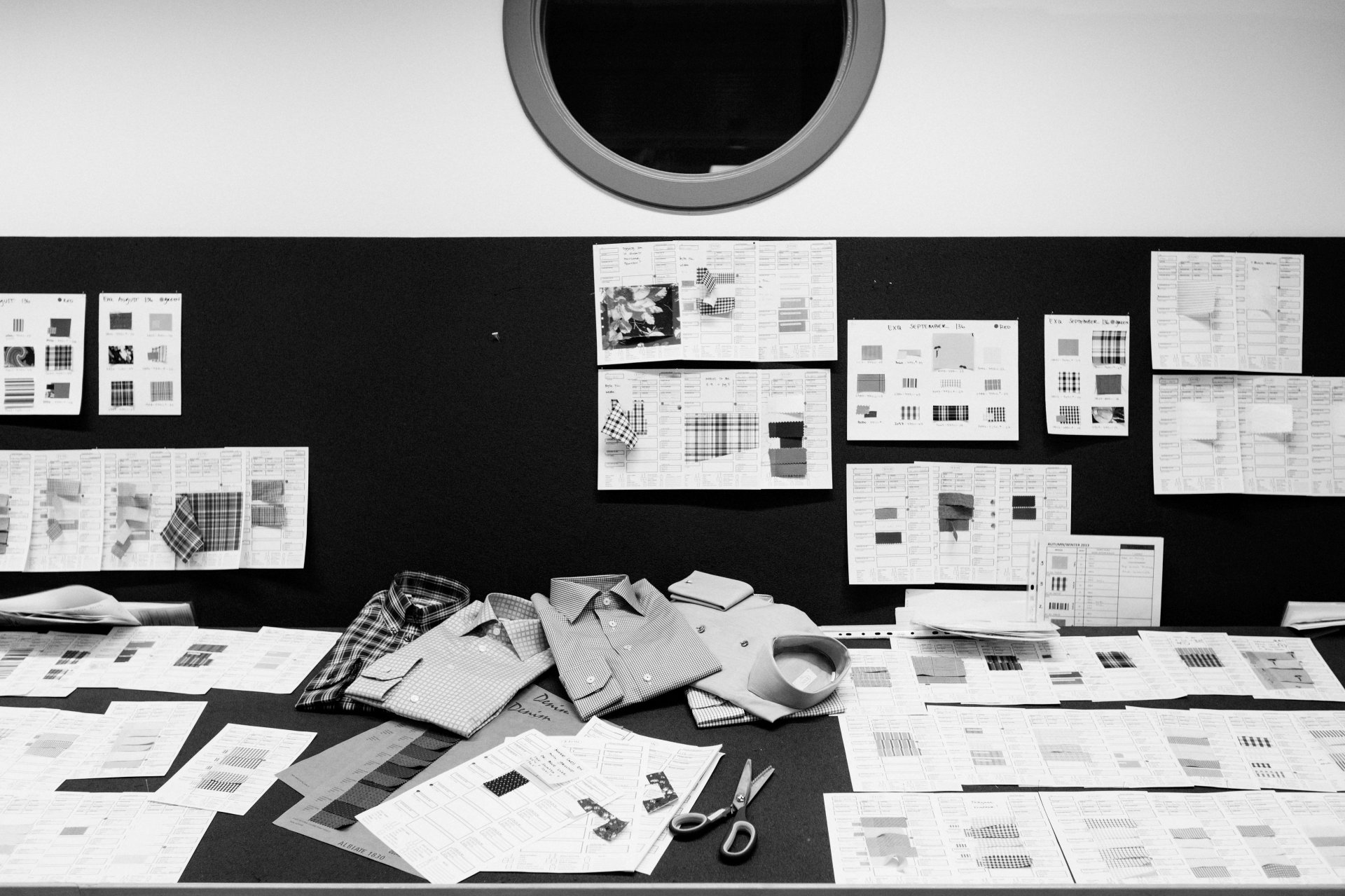
1992
During a visit to an interlining supplier, Hans Davidsson discovered non-iron material that the company had stored in a hidden corner. The rubbery material was completely unsuitable for processing. Despite these teething issues and industry skepticism, Eton is convinced that non-iron technology is the future of shirting. Together with spinners and weavers, and a facility in Switzerland, Eton is working feverishly to develop an unsurpassed material that not only retains its fit all day long, but also possesses a beautiful shine and optimal strength.
1993
Eton presents Eton Etastar, the first non-iron shirt made of 100% cotton. The first retailer to sell the product is none other than Harrods. An astounding 600 shirts are sold in the first week. To make the launch even more impactful, Eton designer Jan Borghardt inspires the department store to launch its first-ever advertising campaign. The campaign goes global, and Eton quickly becomes Harrods' best-selling shirt.
1994
Eton begins collaborating with American charities, including the Elizabeth Taylor AIDS Foundation. A custom-made shirt with the "Stop AIDS" logo is produced. It quickly sells out and is worn by Hollywood stars such as Leonardo DiCaprio and Tom Hanks at the Oscars. Eton's lower profile in the US reinforces its aura of exclusivity, increases demand, and allows Eton to offer its products in exclusive department stores such as Saks Fifth Avenue and Neiman & Marcus.
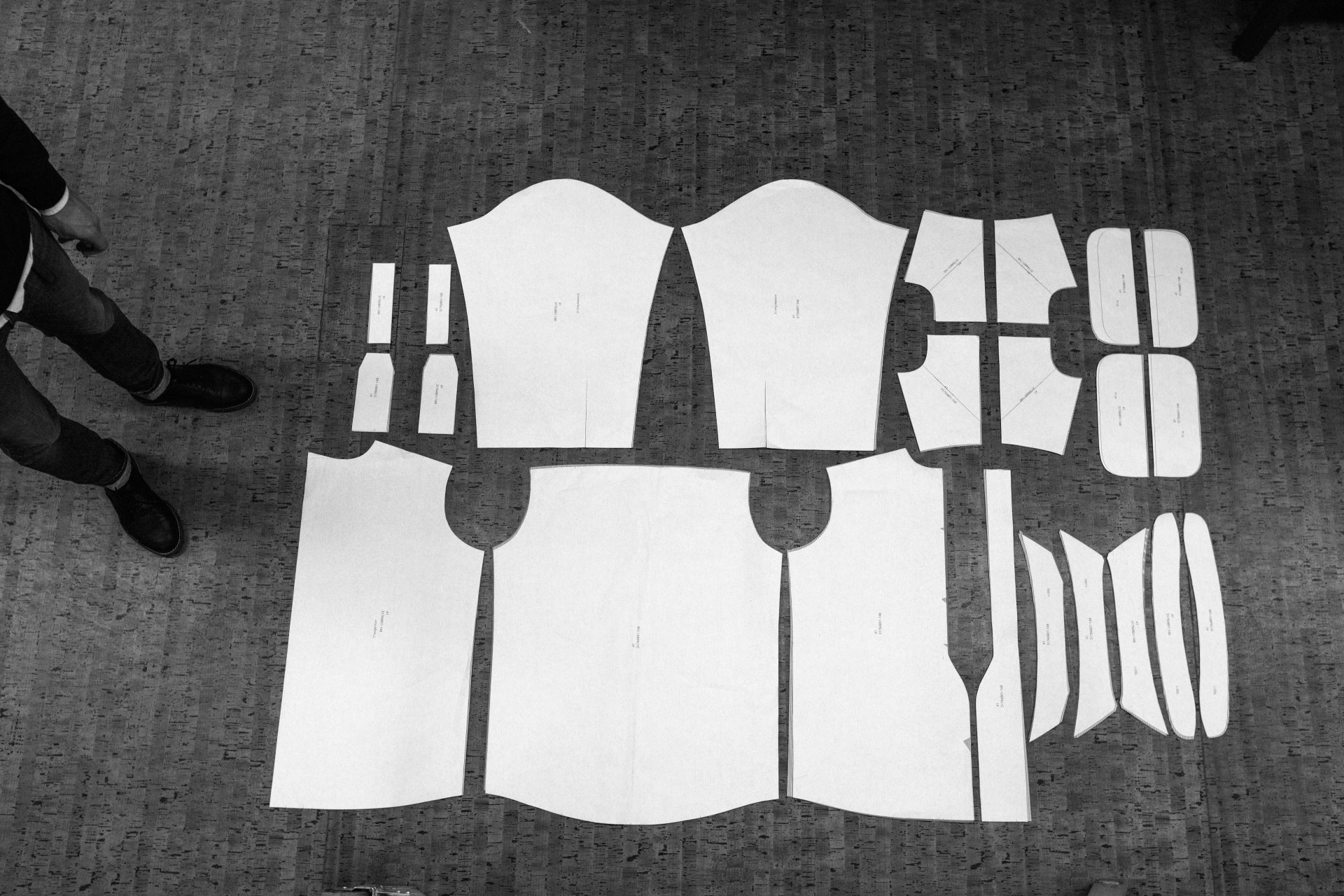
1997
To offer a wide range of shirts while simultaneously taking retailers' limited inventory capacity into account, Eton introduces the Stock Service Book. This new book enables faster deliveries of seasonal items and shirts with classic designs. This represents such a variety of styles that keeping them in stock is simply impossible. The Stock Service Book is a resounding success and soon forms the basis of the company's relationship with retailers.
1999
Eton sees the display of shirts in the store as a key aspect of successful sales. Eton has always paid great attention to quality when it comes to packaging, which is why it has always worked with exclusive materials. As the selection in stores continues to expand, it is becoming more and more difficult to stand out from the crowd. To give customers an overview of the collection and at the same time allow them to experience the exclusive products, Eton developed a completely new store concept in which the shirts are displayed on open shelves. With its purist, Scandinavian design, the concept forms the template for an interior design that can be applied to both freestanding stores and shop-in-shops. This also changed the retail strategy, as Eton focused more on larger department stores.
2013
Eton's first flagship store in London opens in the historic Mayfair district. The chosen address is an elegant Georgian house, offering the complete range of Eton's elegant menswear in 60 square meters. Above the store is a 90 square meter space used as a showroom and office.
"Our company has a rich history that is closely linked to Great Britain," explains Managing Director Hans Davidsson. "Many of Eton's exclusive properties are fundamentally rooted in the British sense of quality. The opportunity to showcase the entire Eton concept here, in the heart of London, is a very attractive one."










